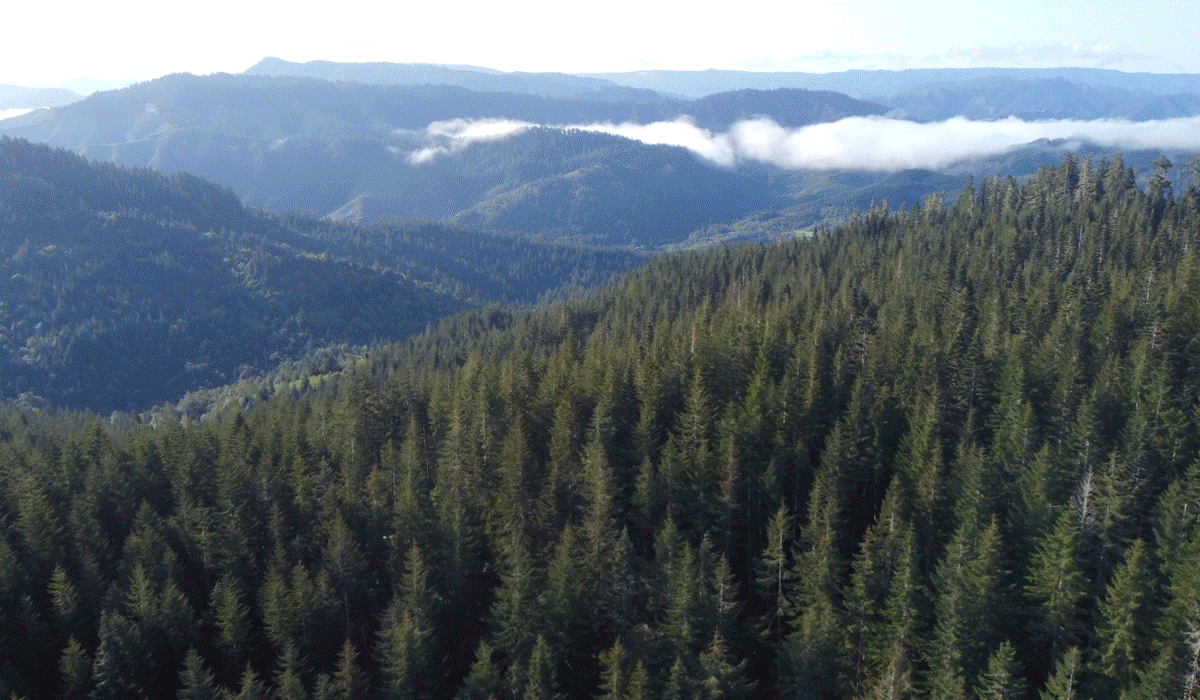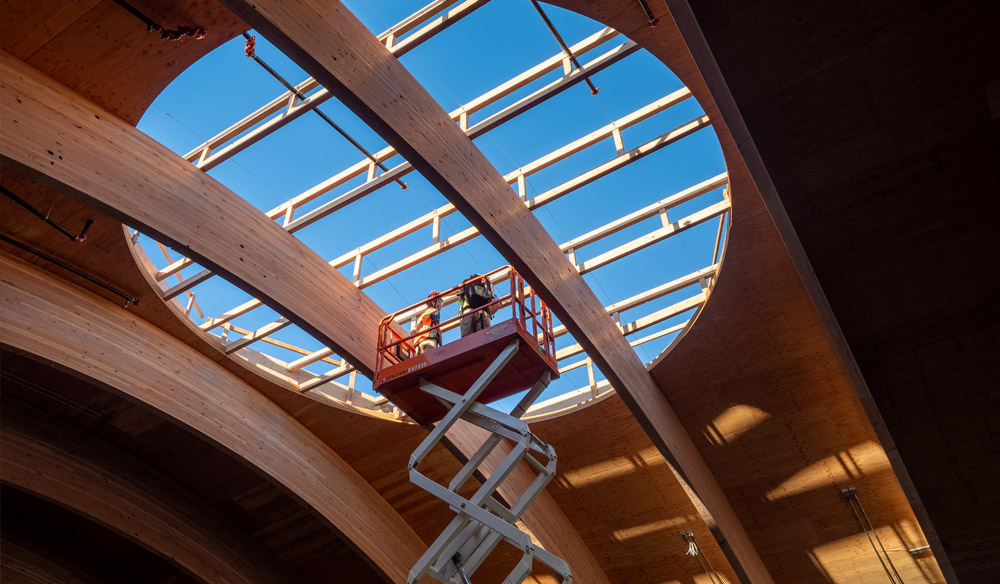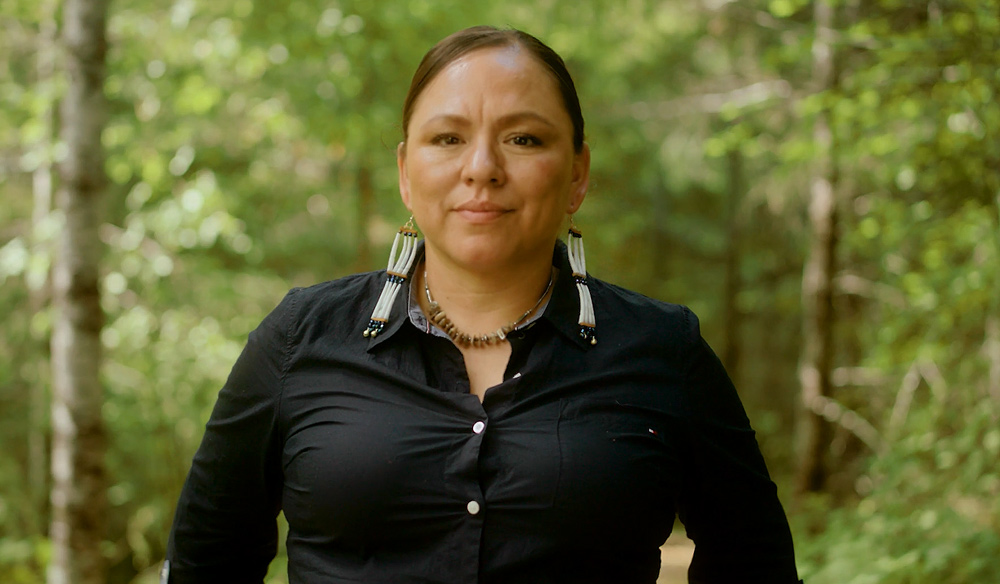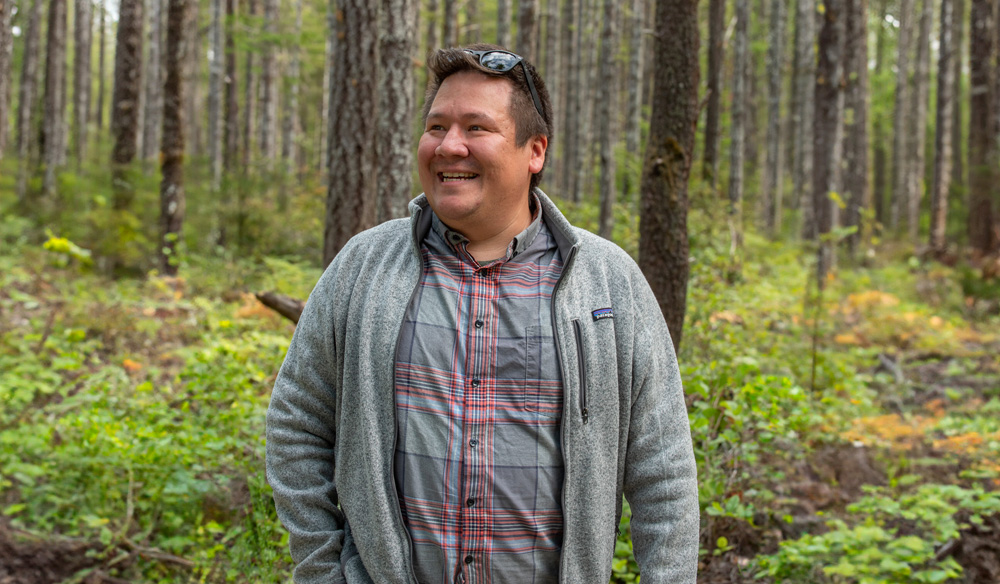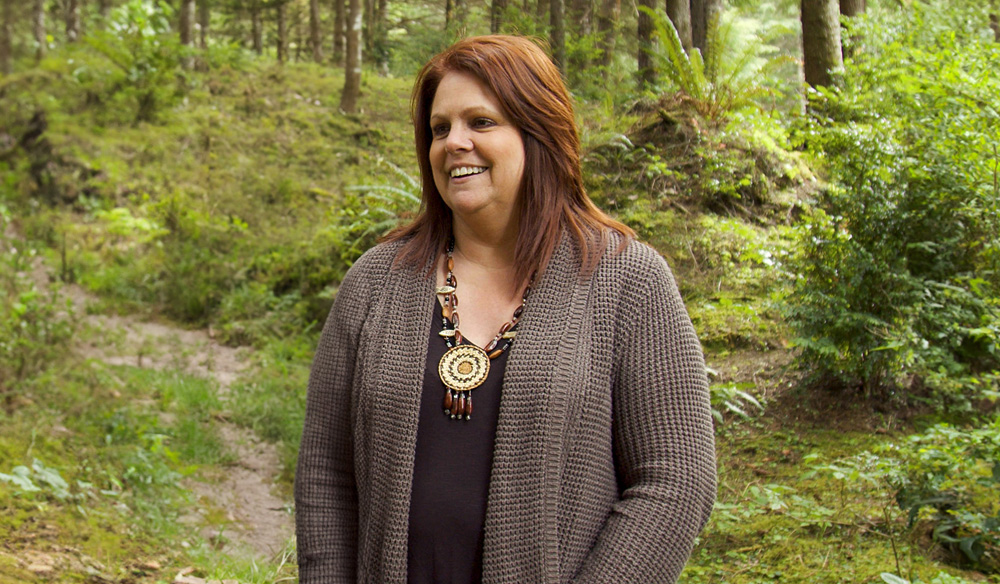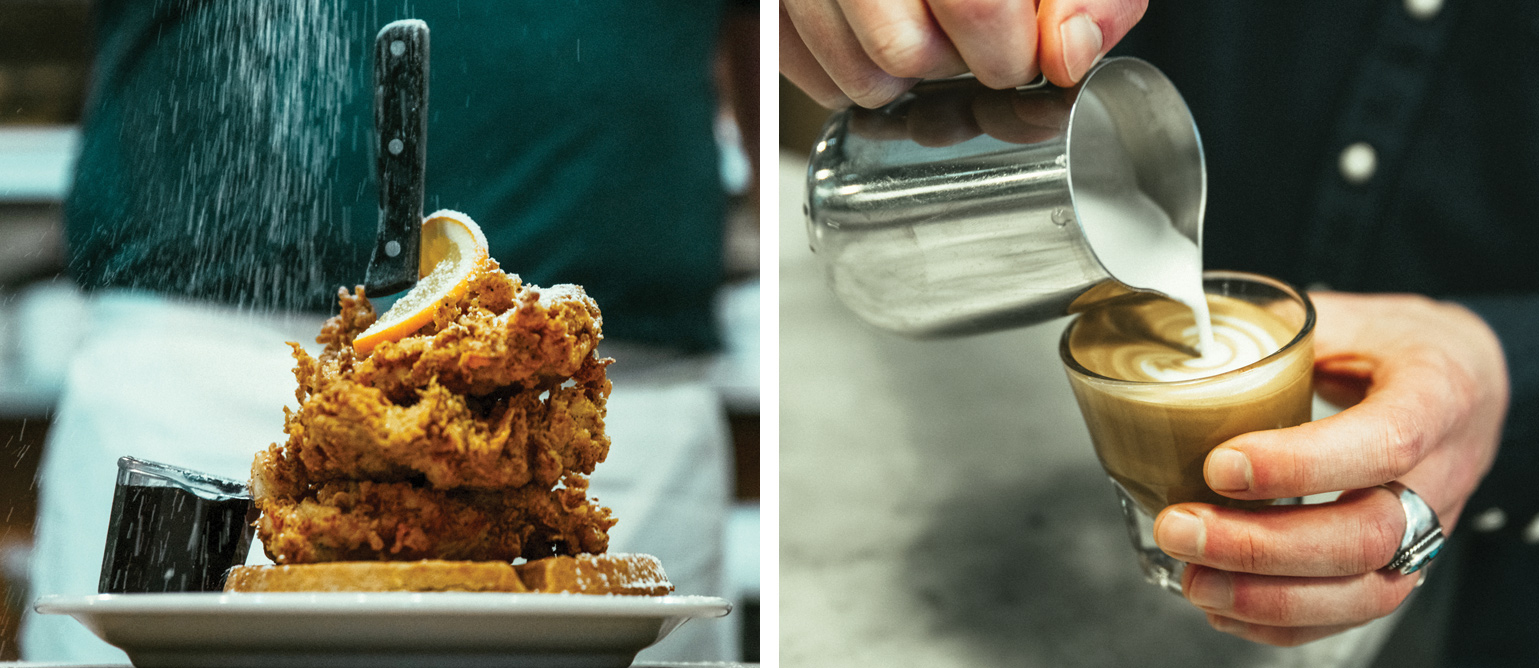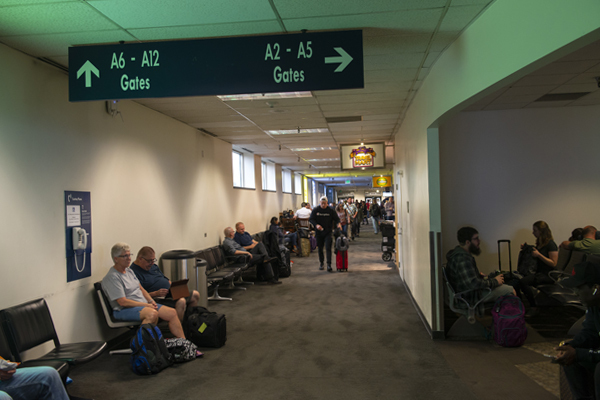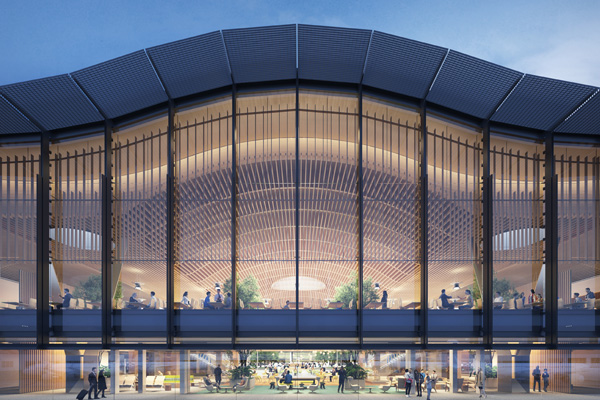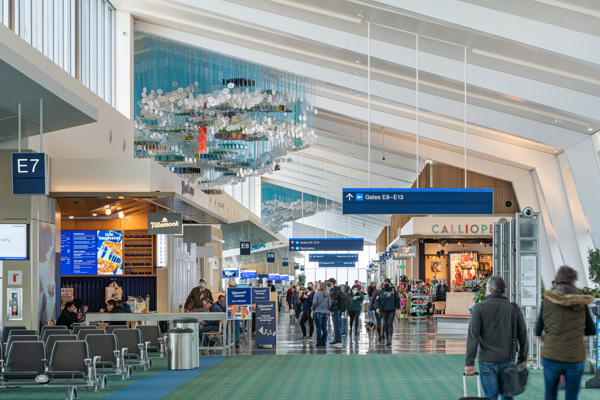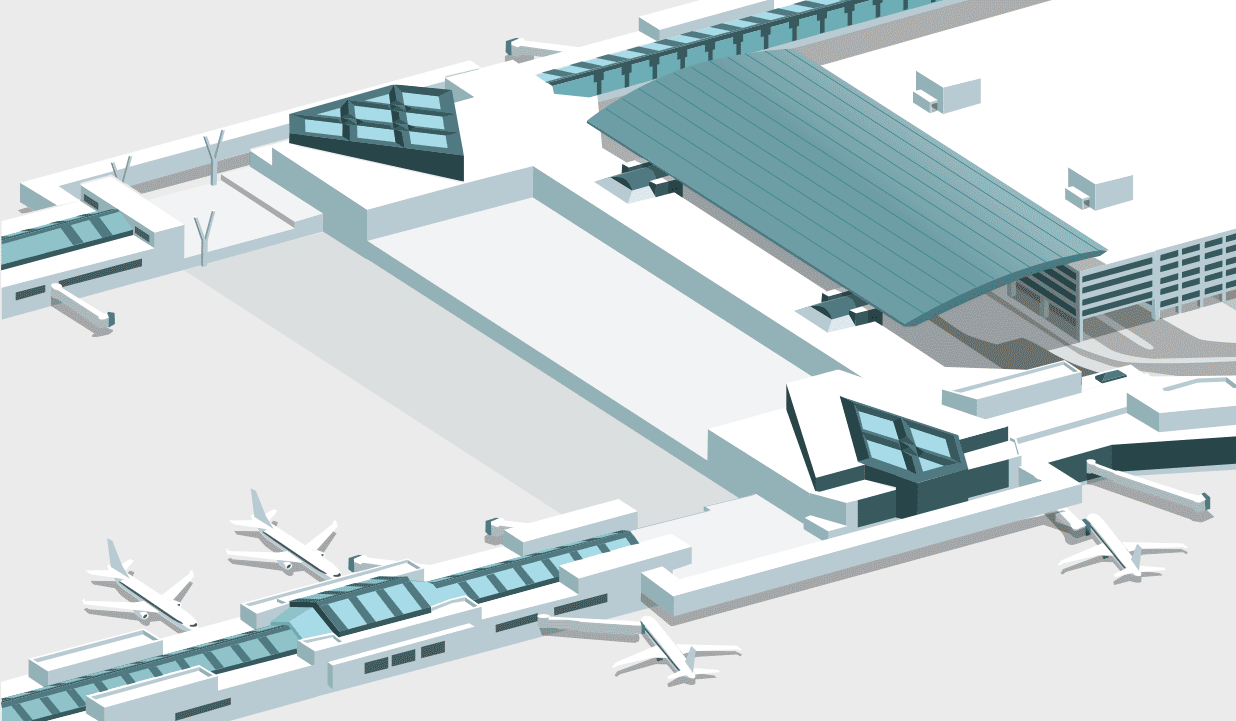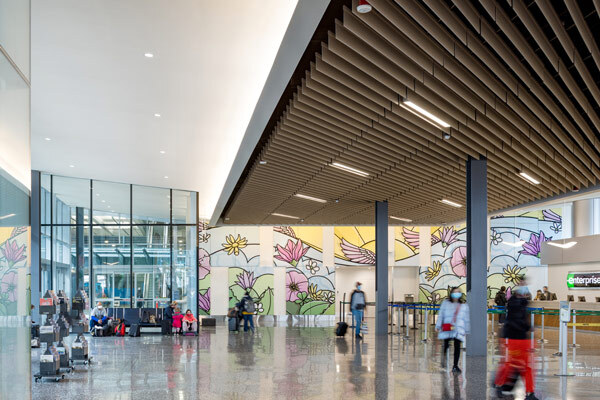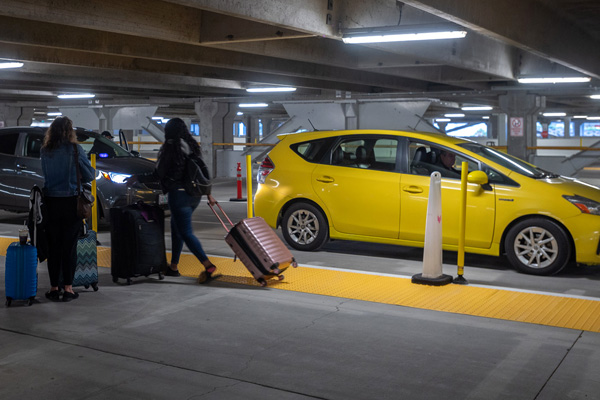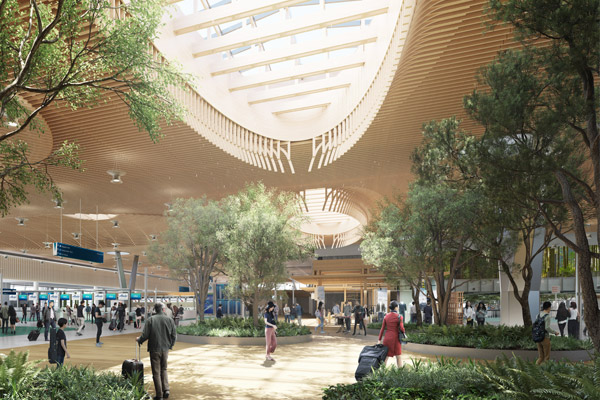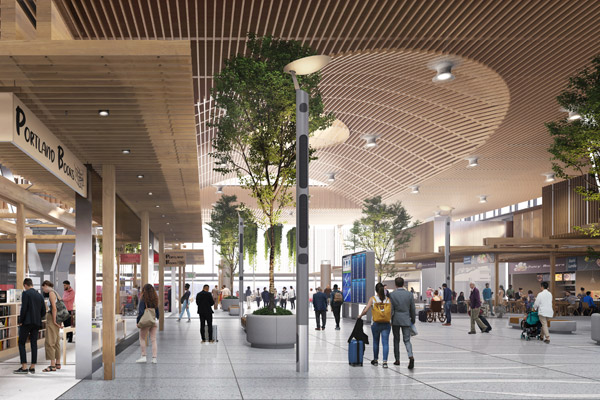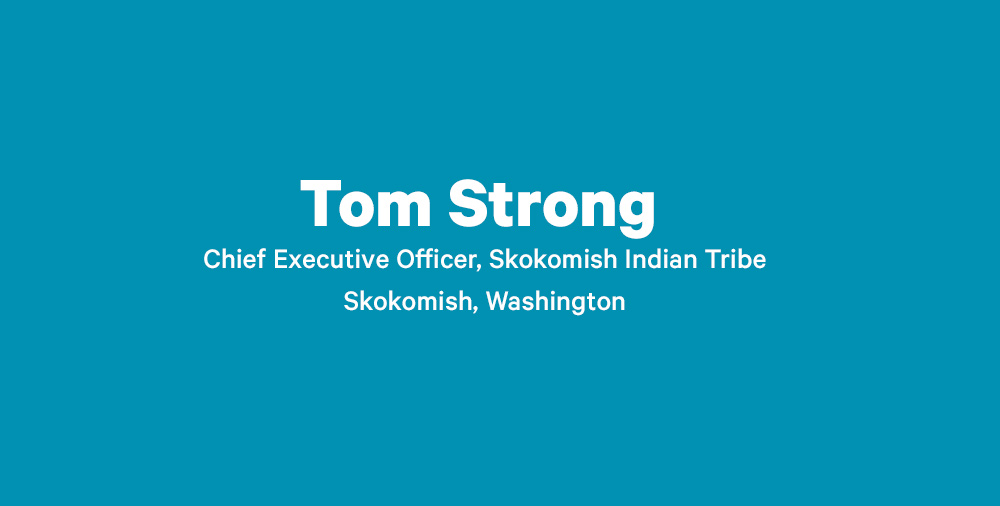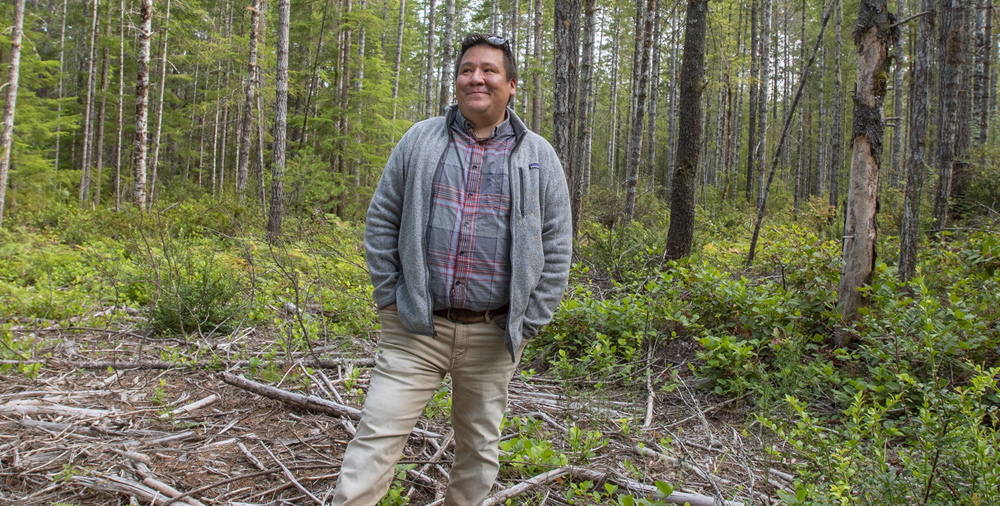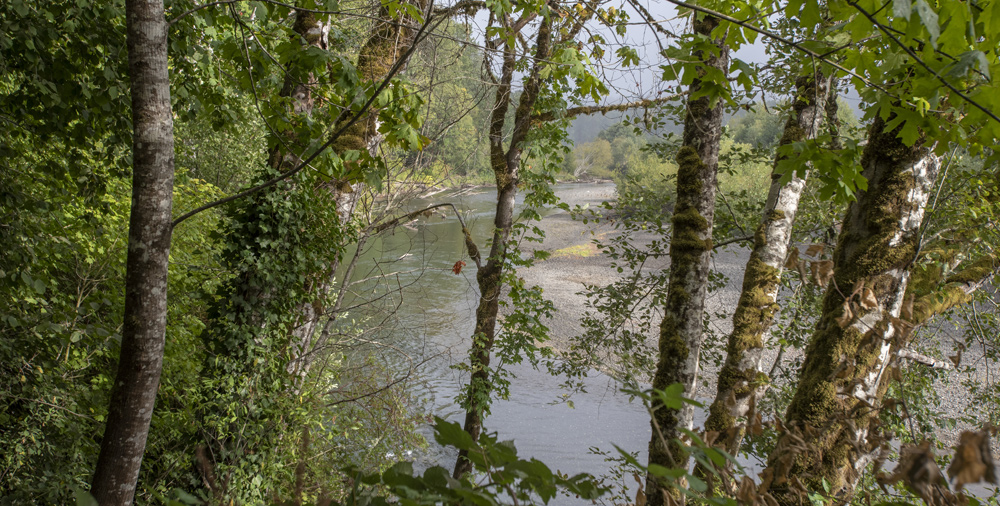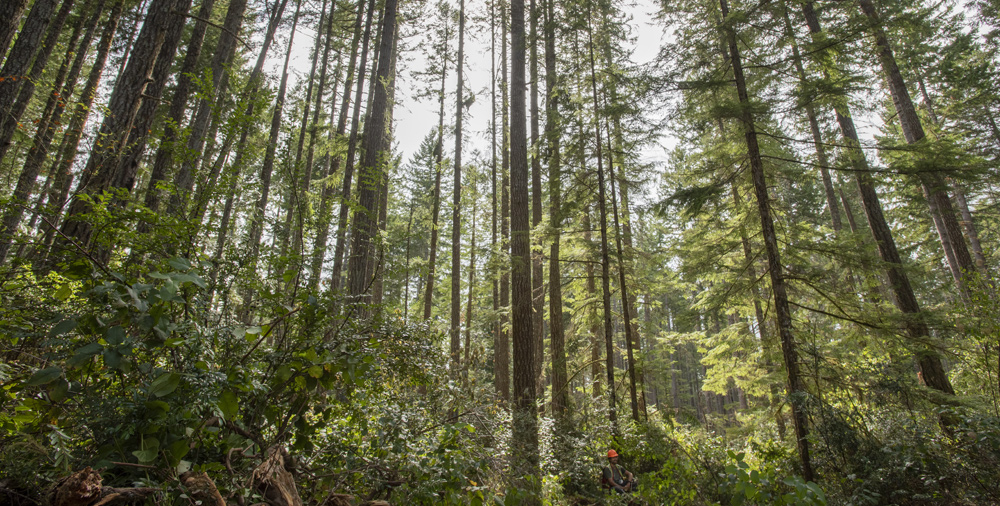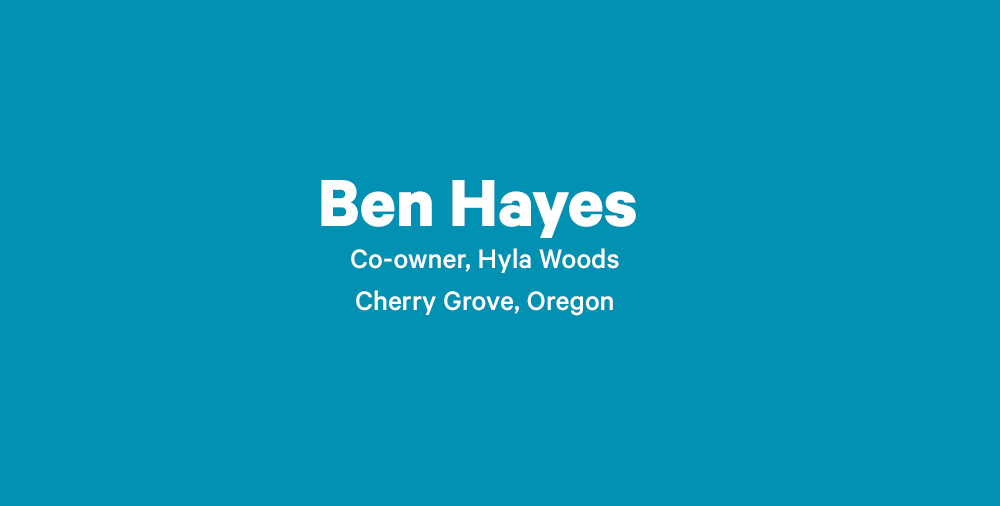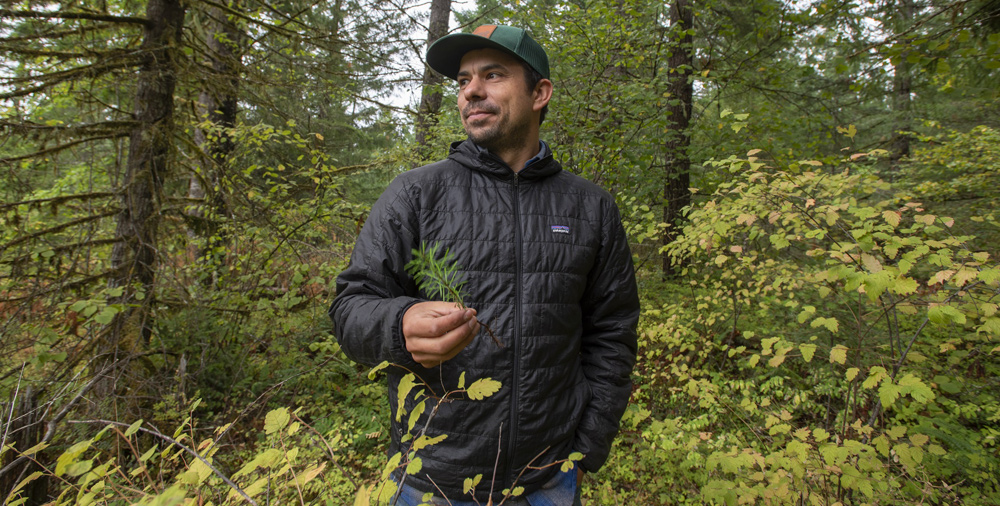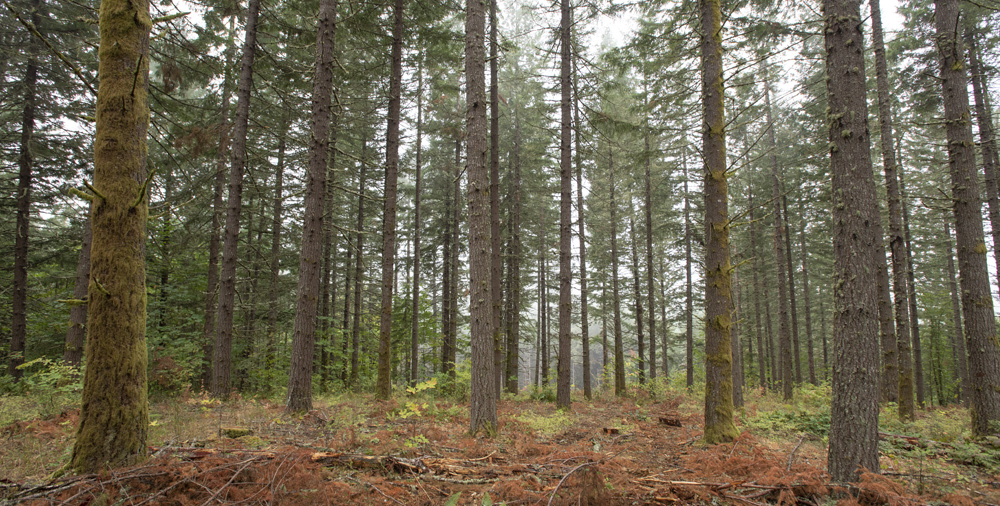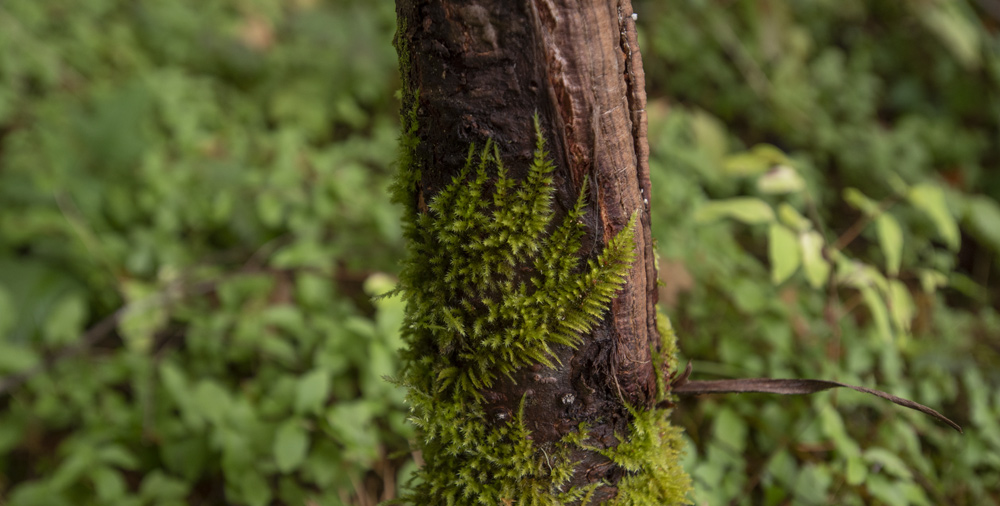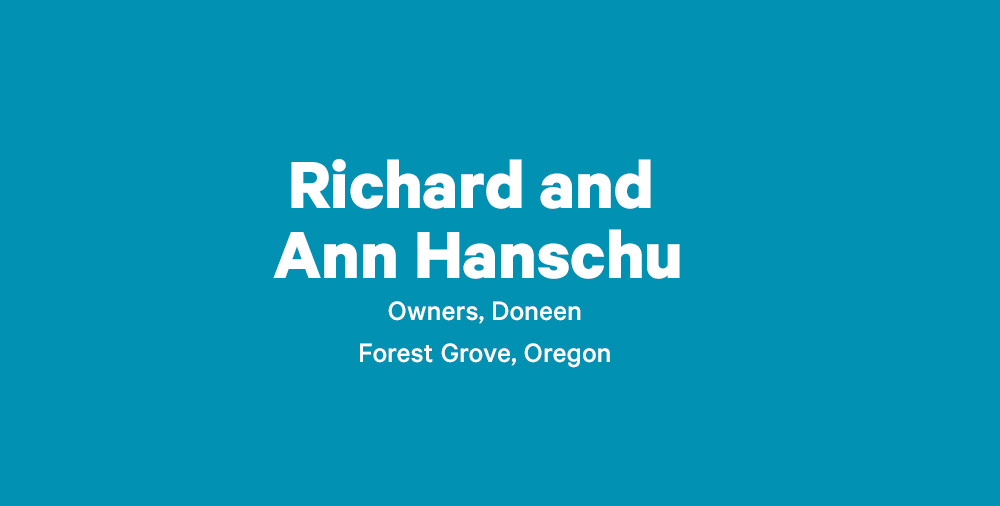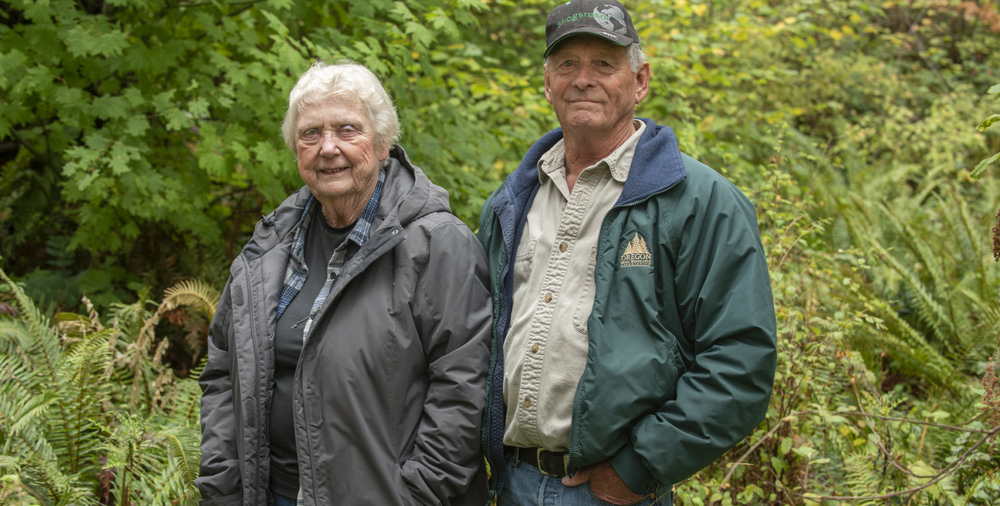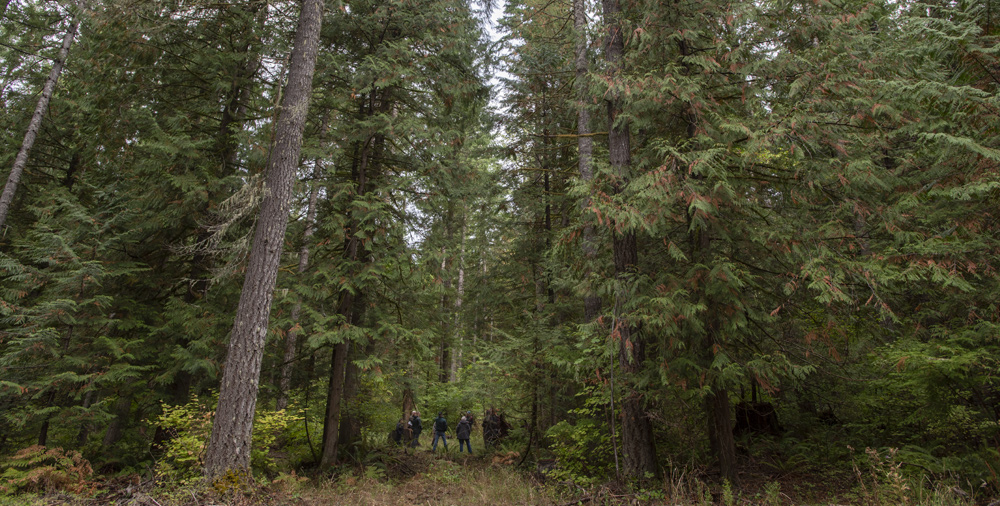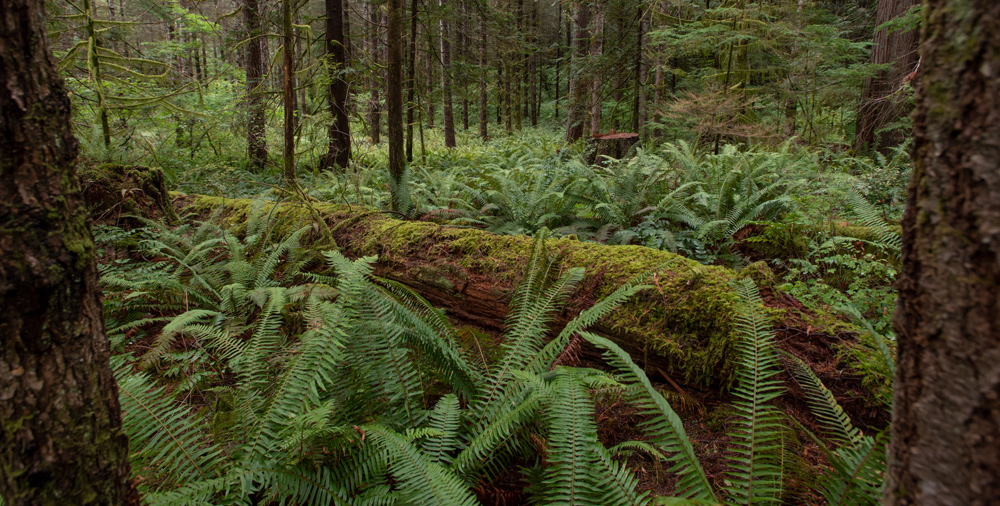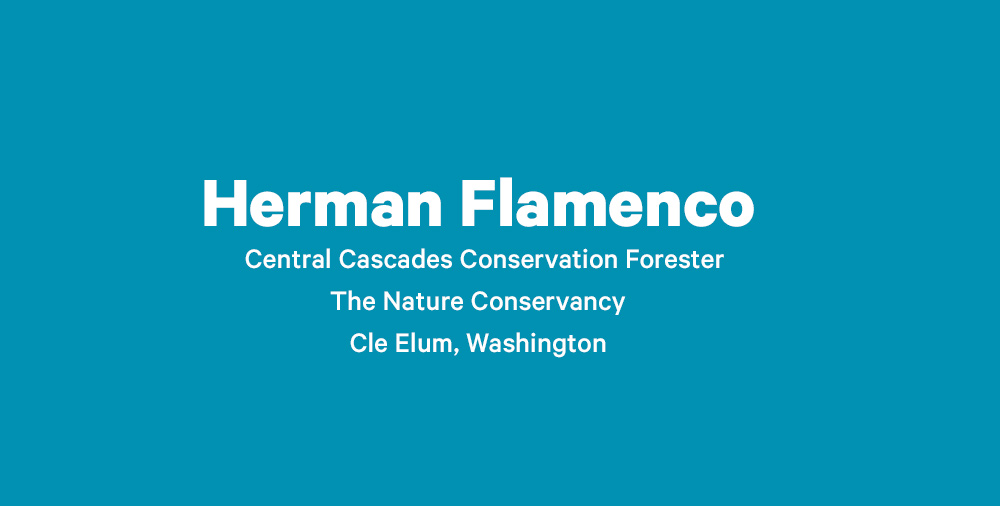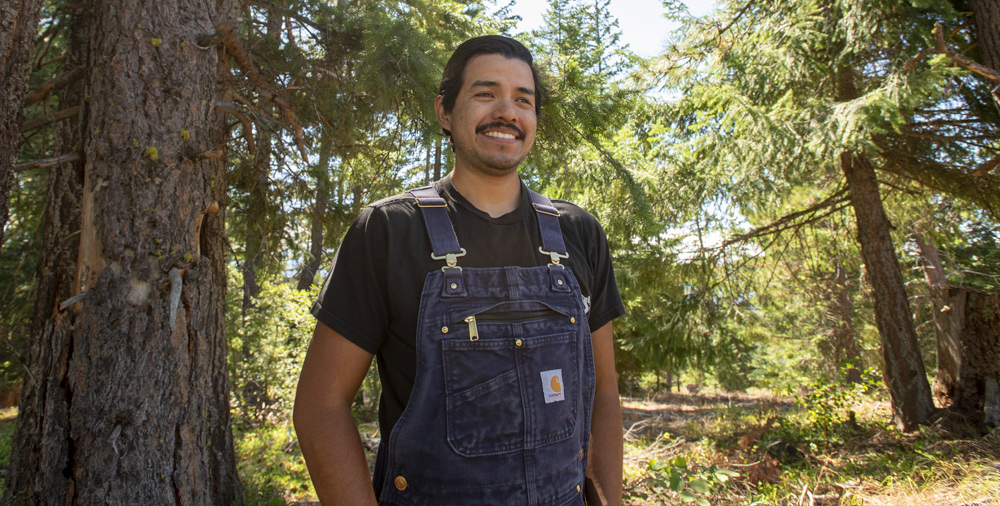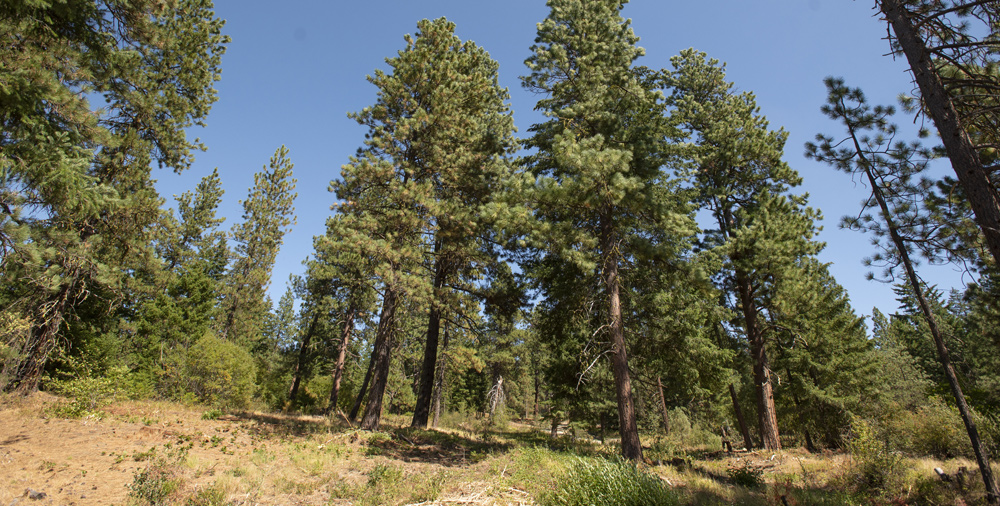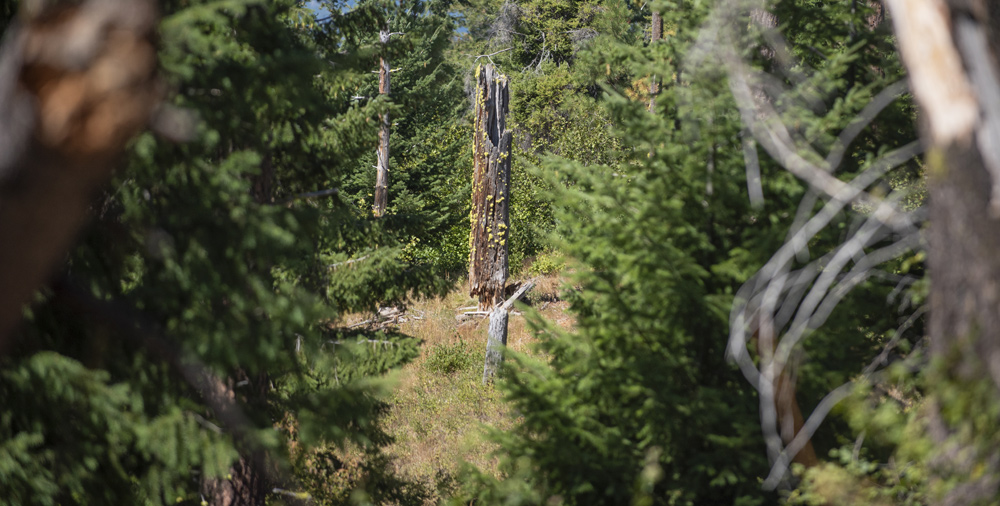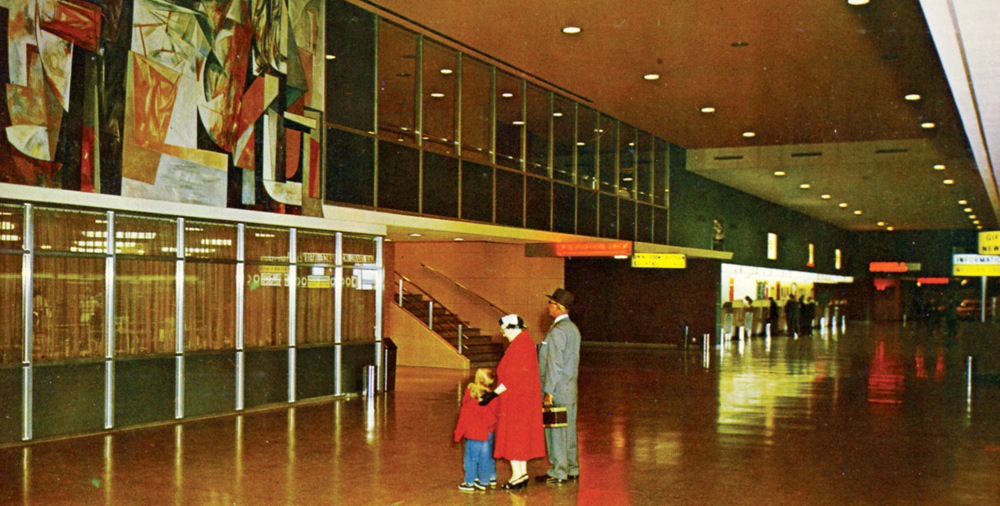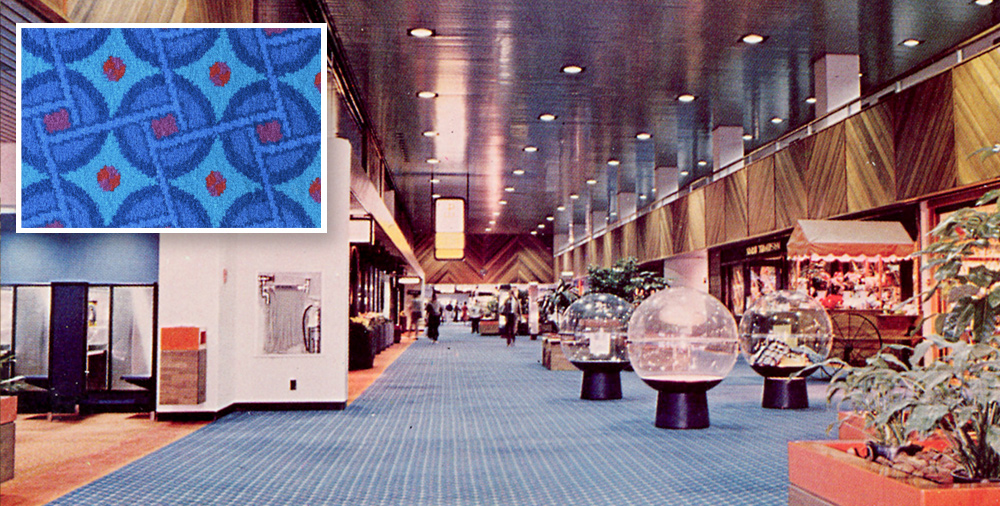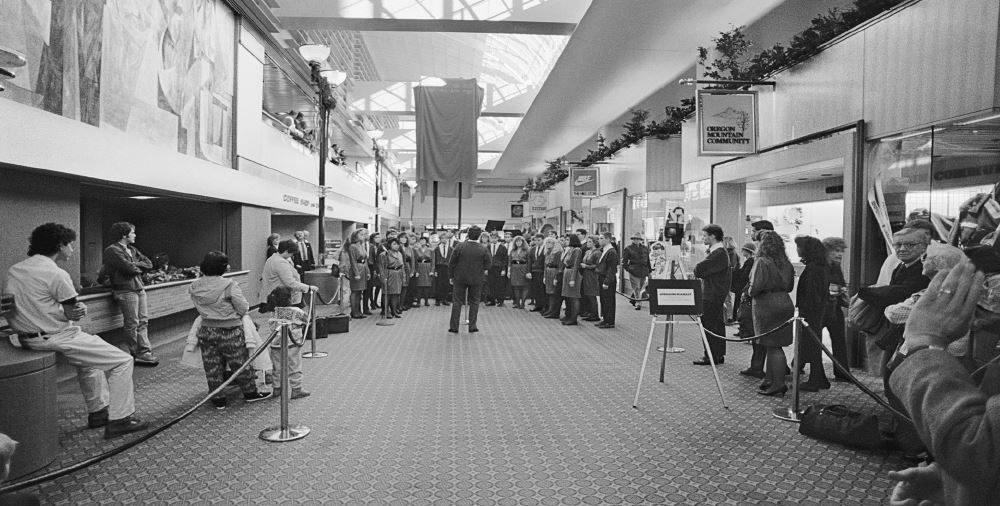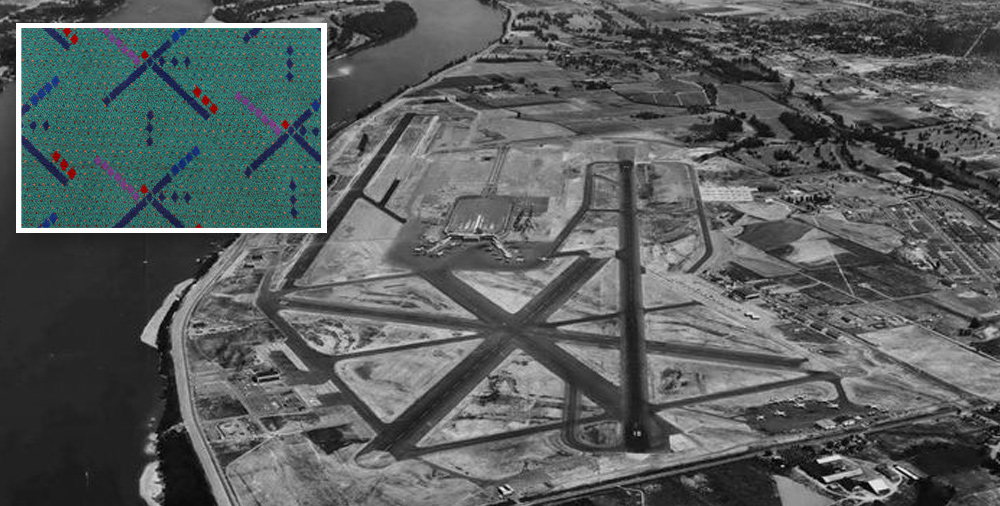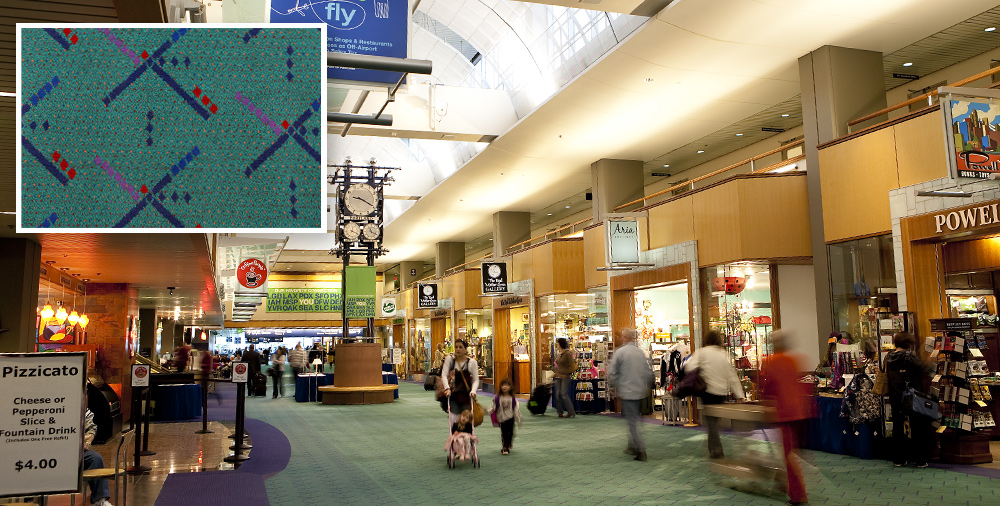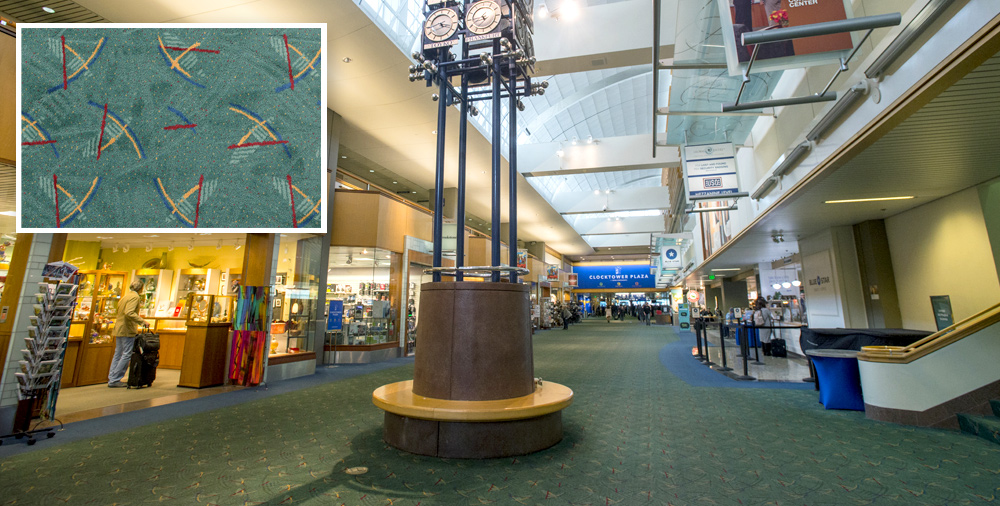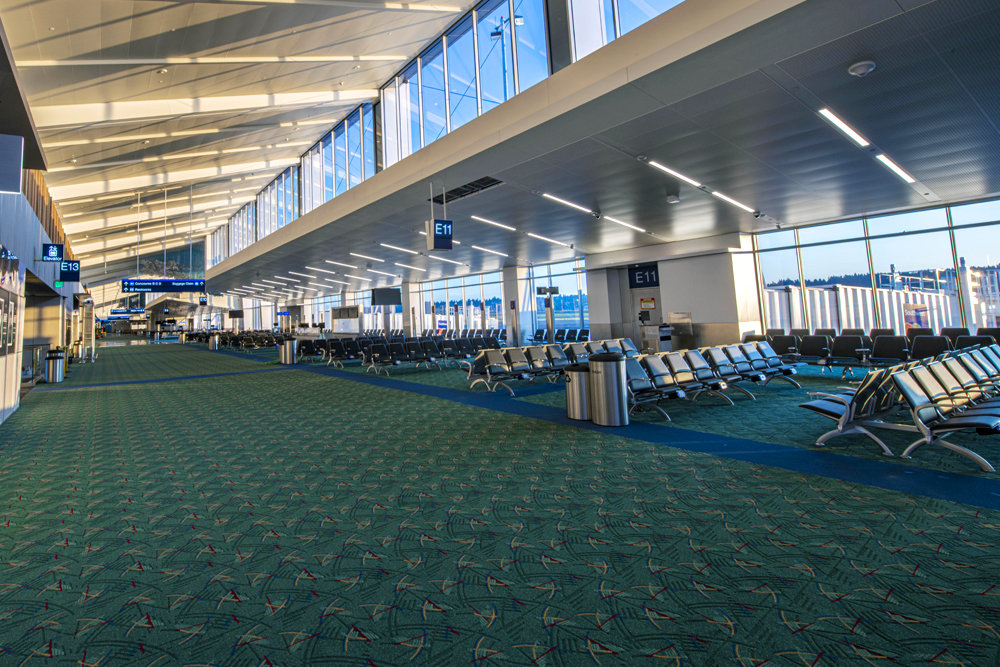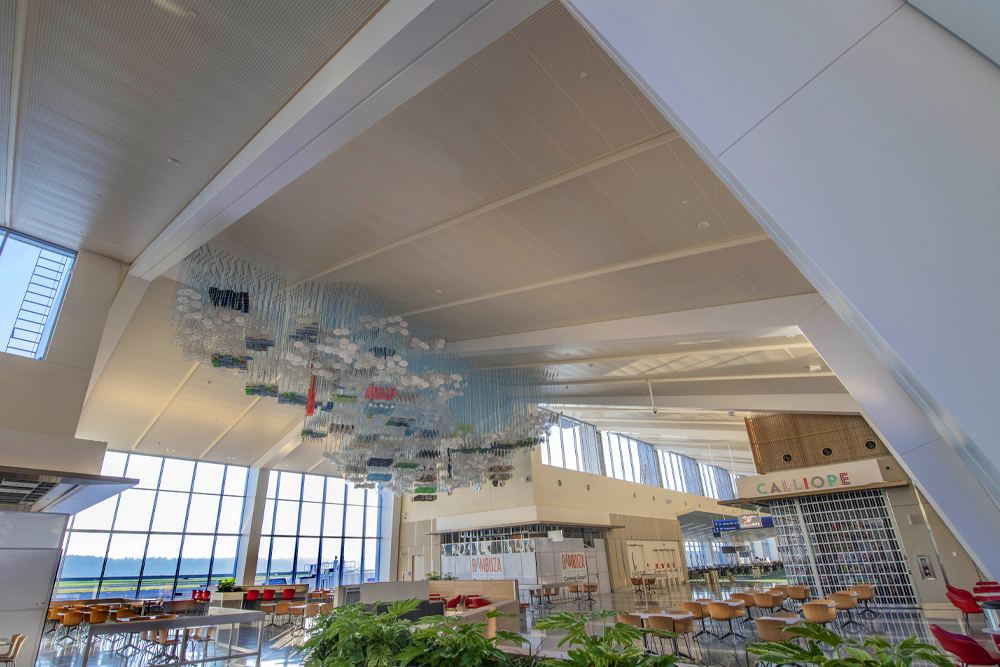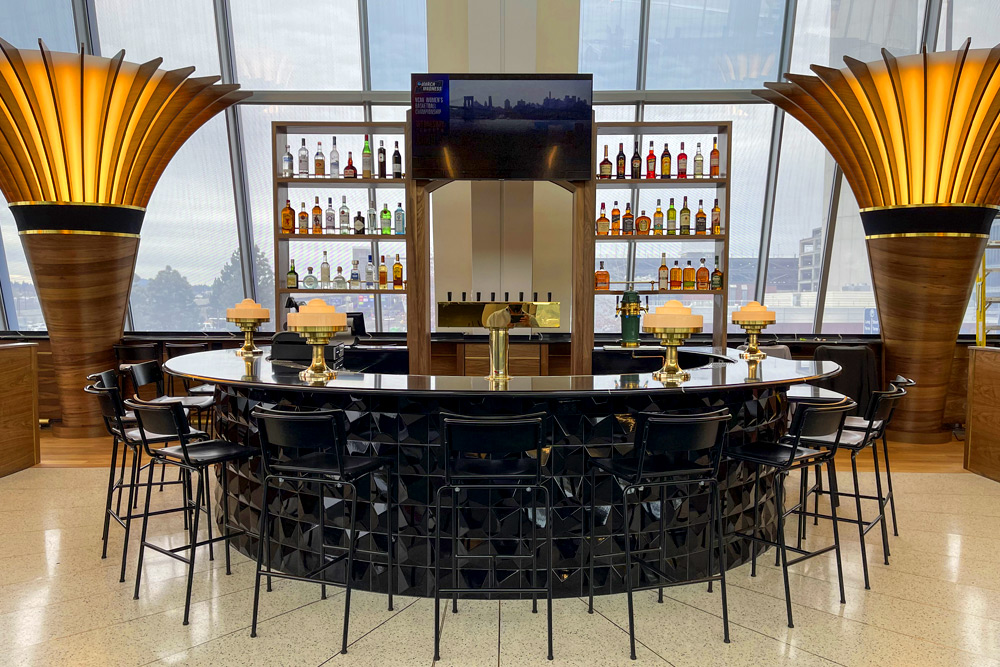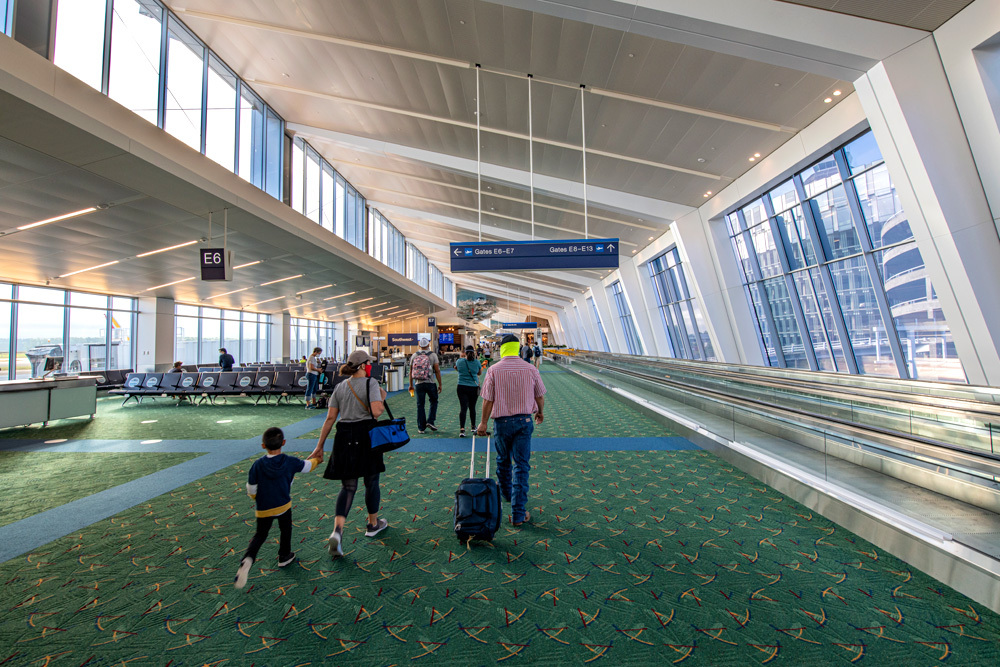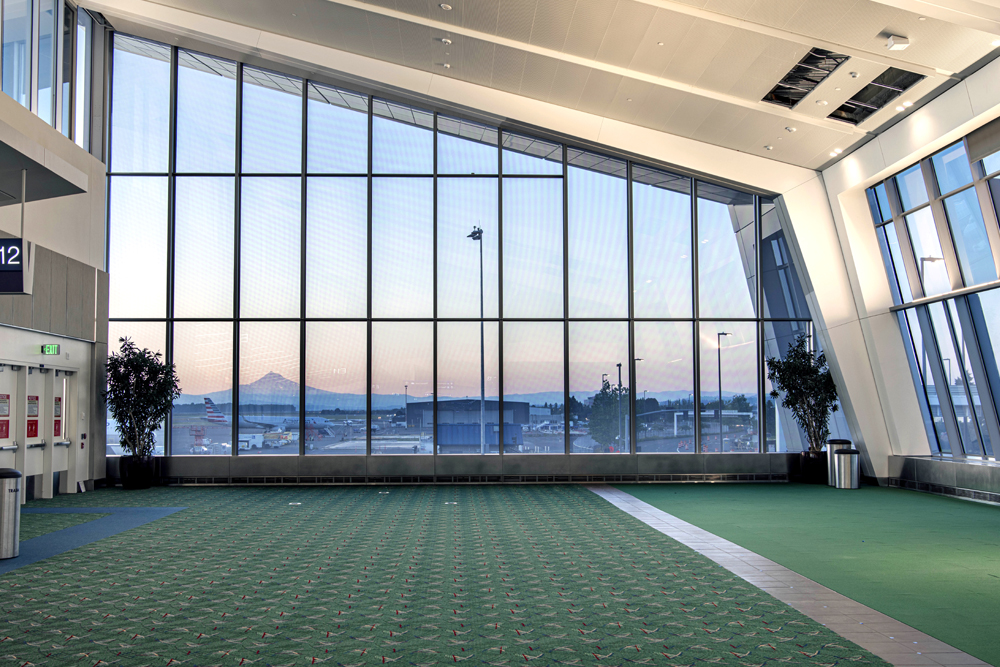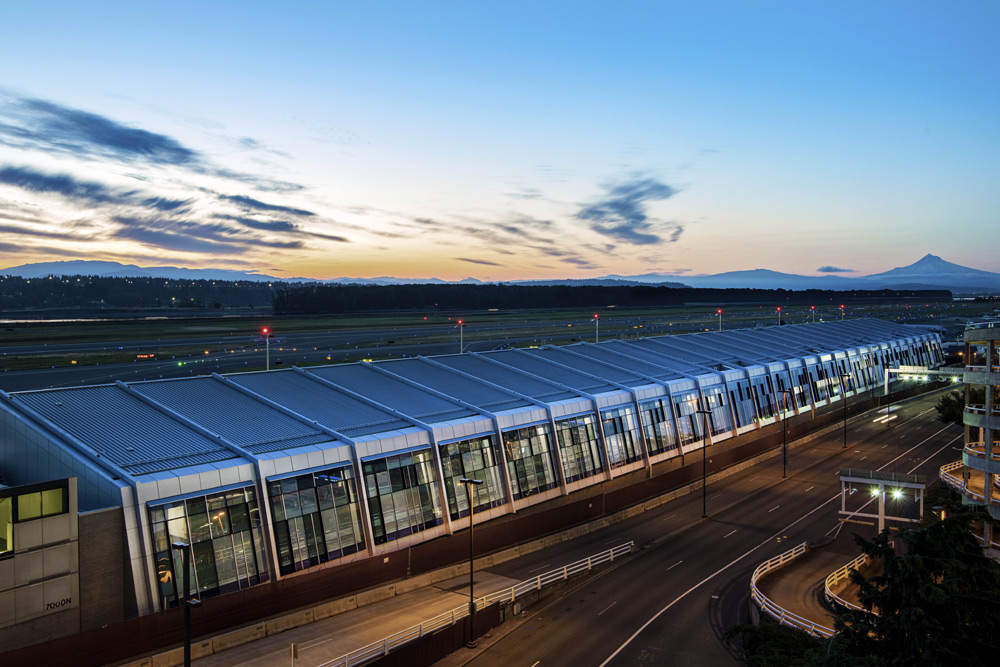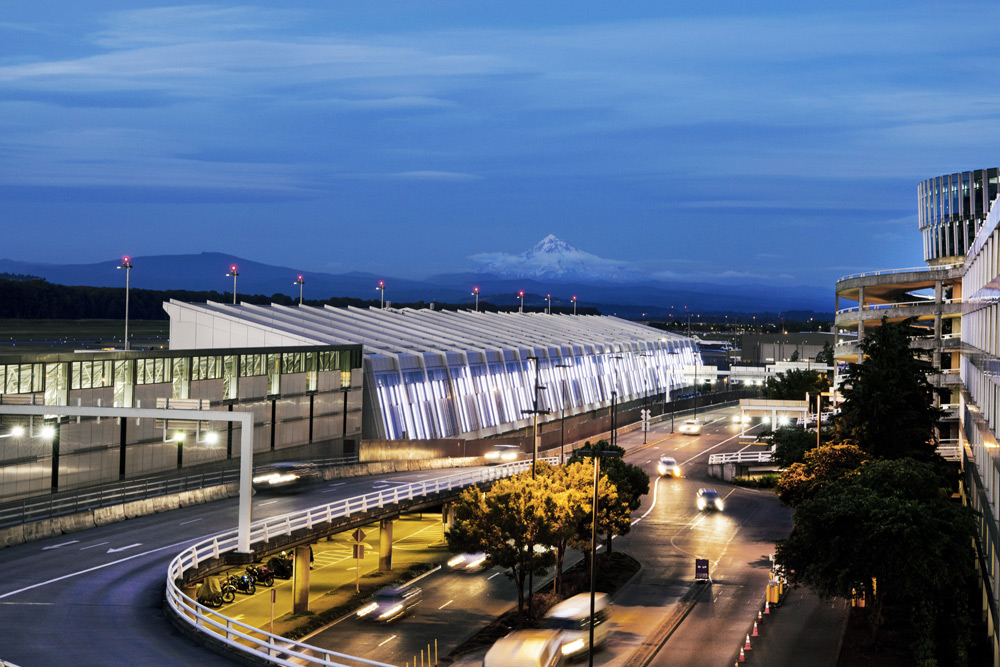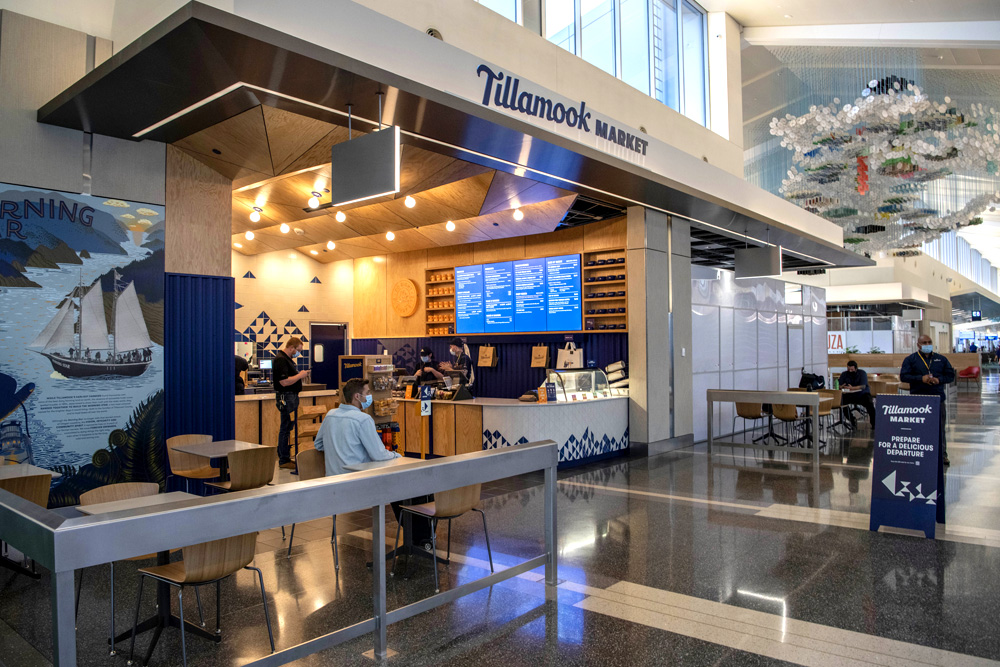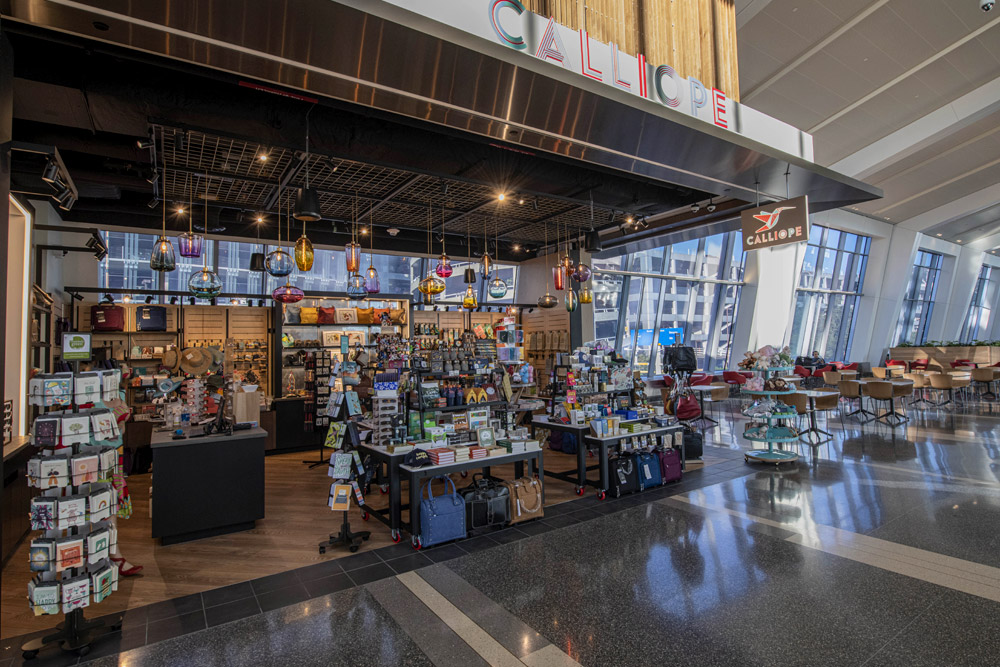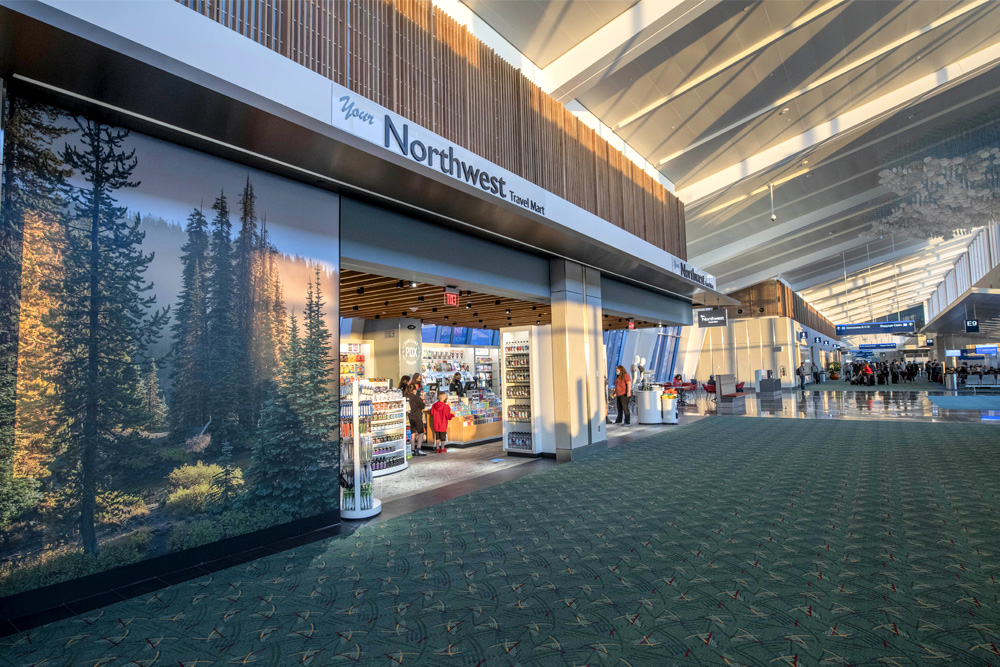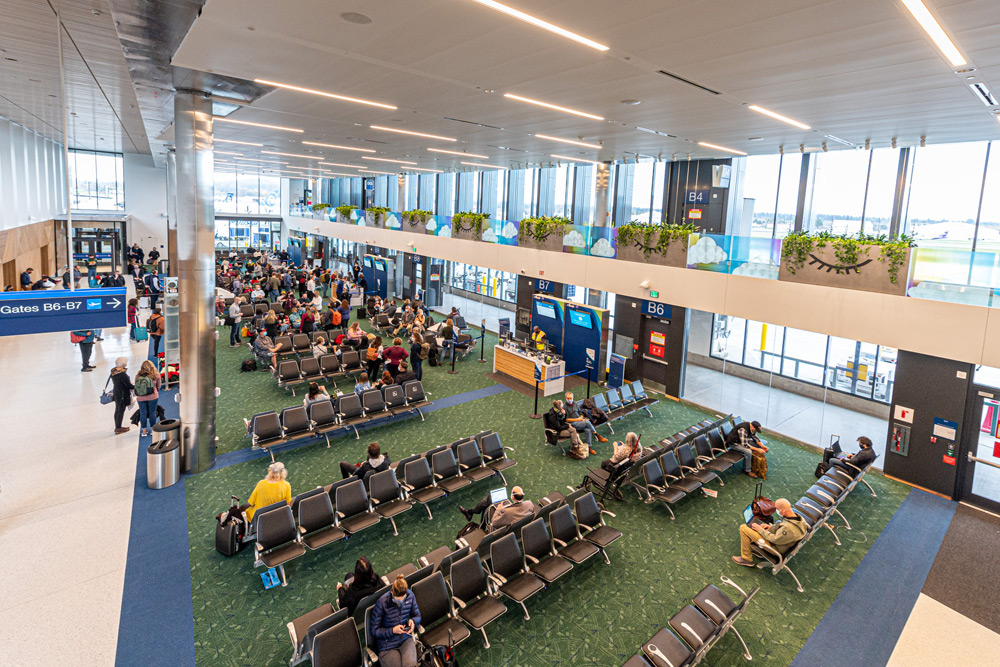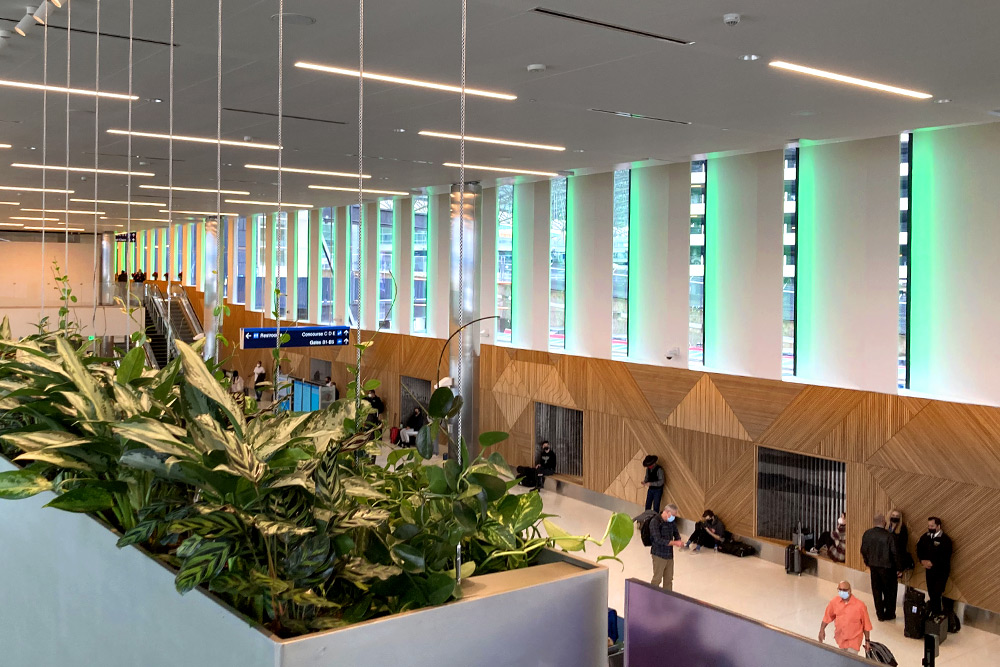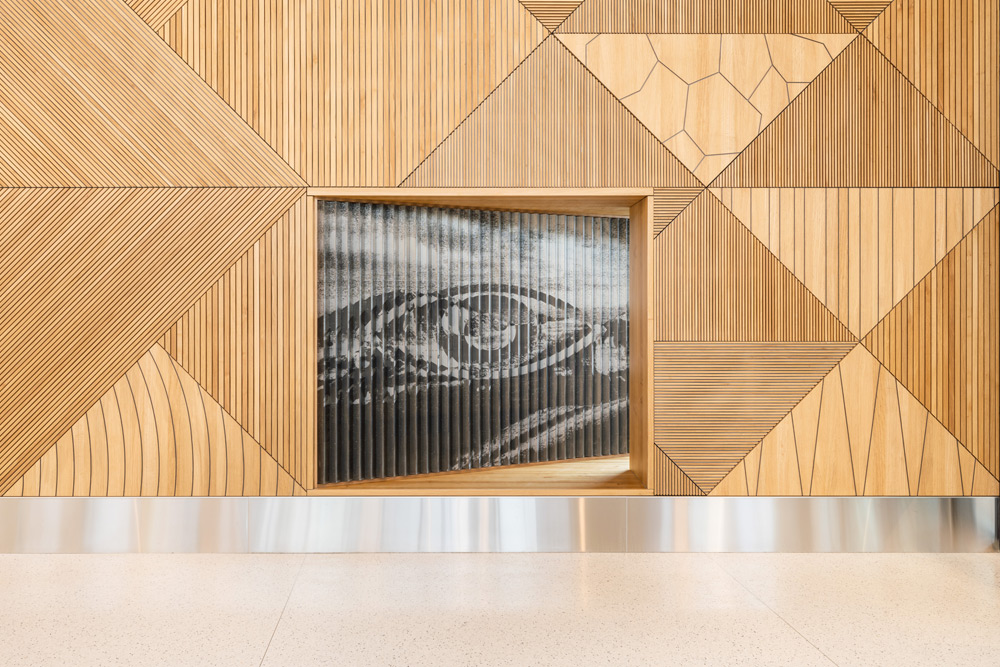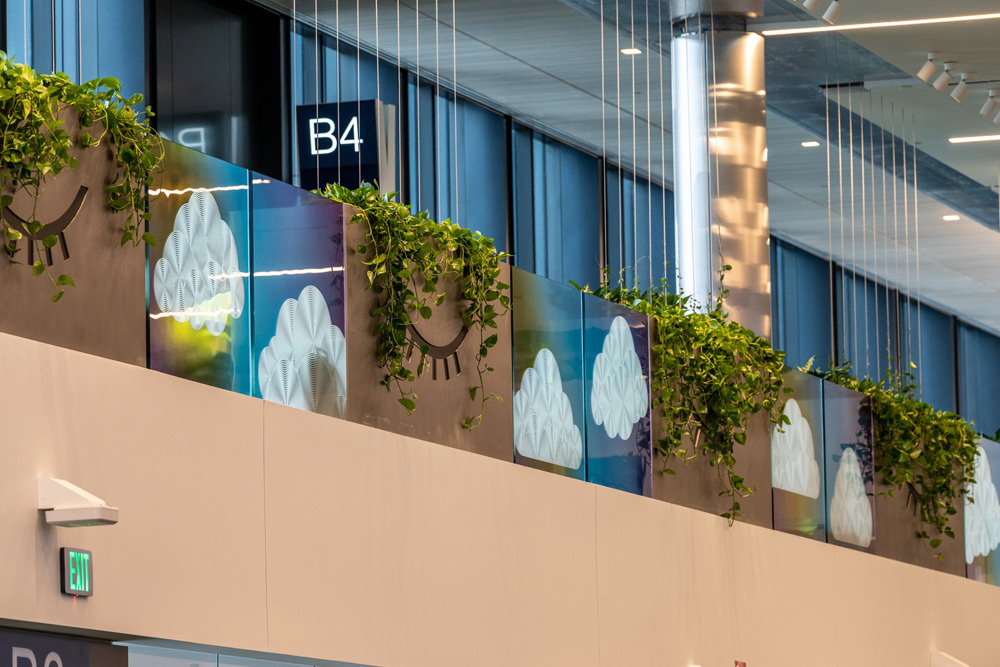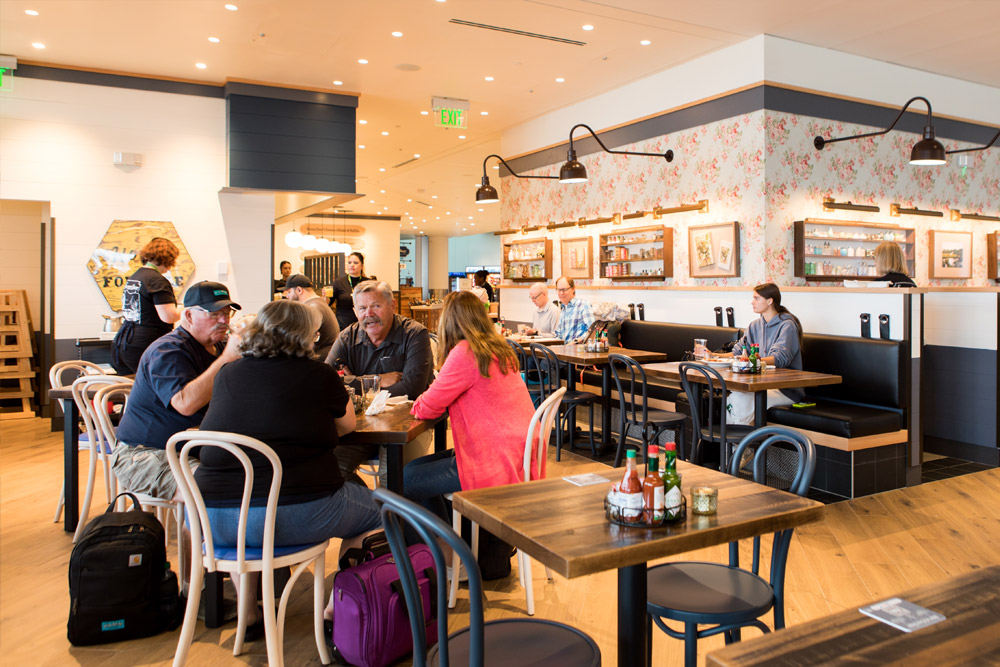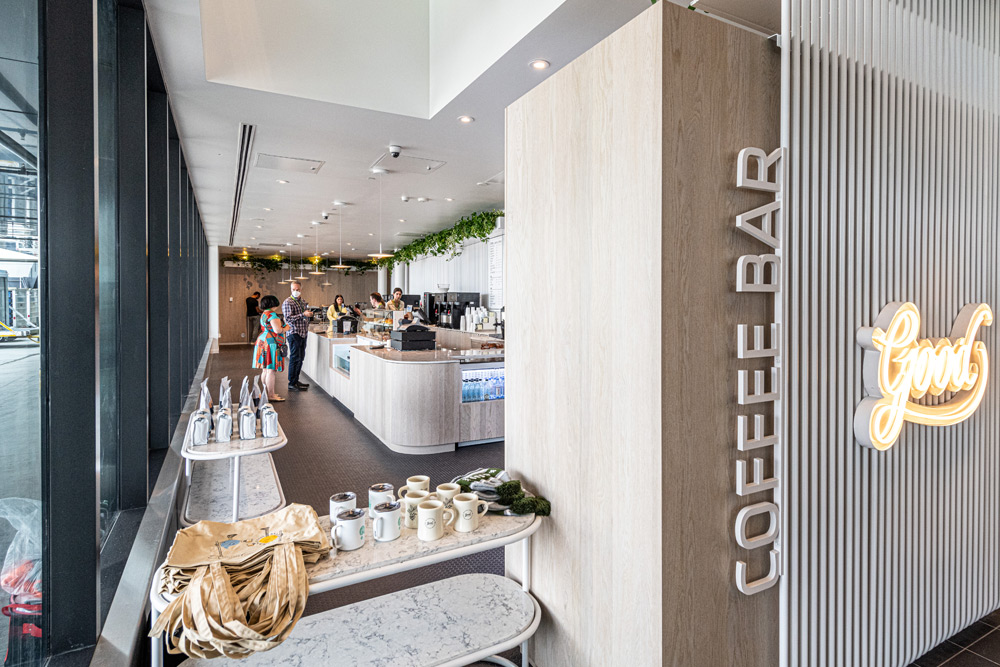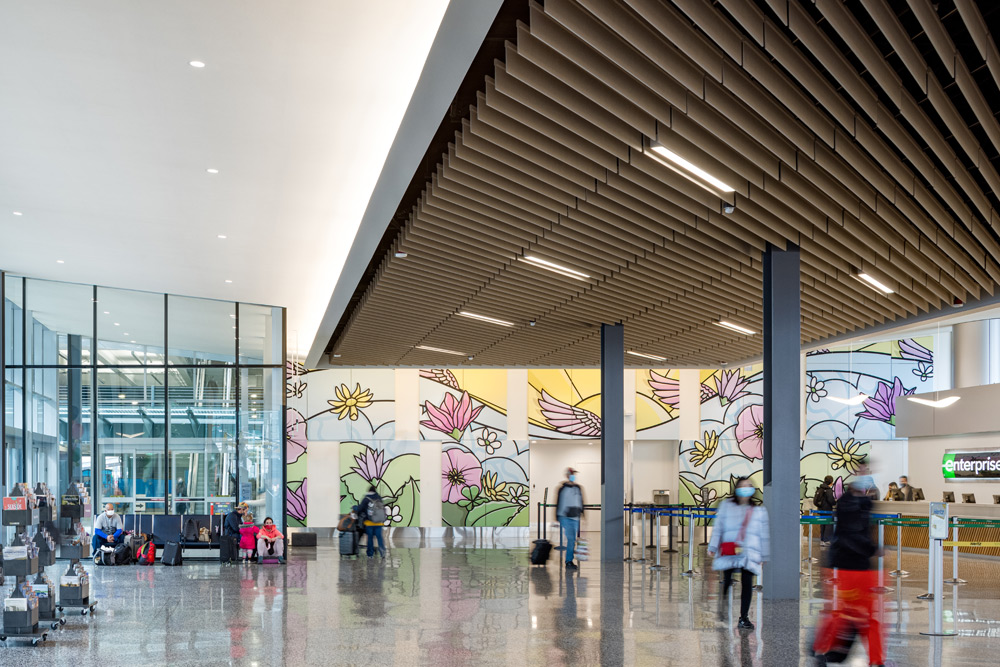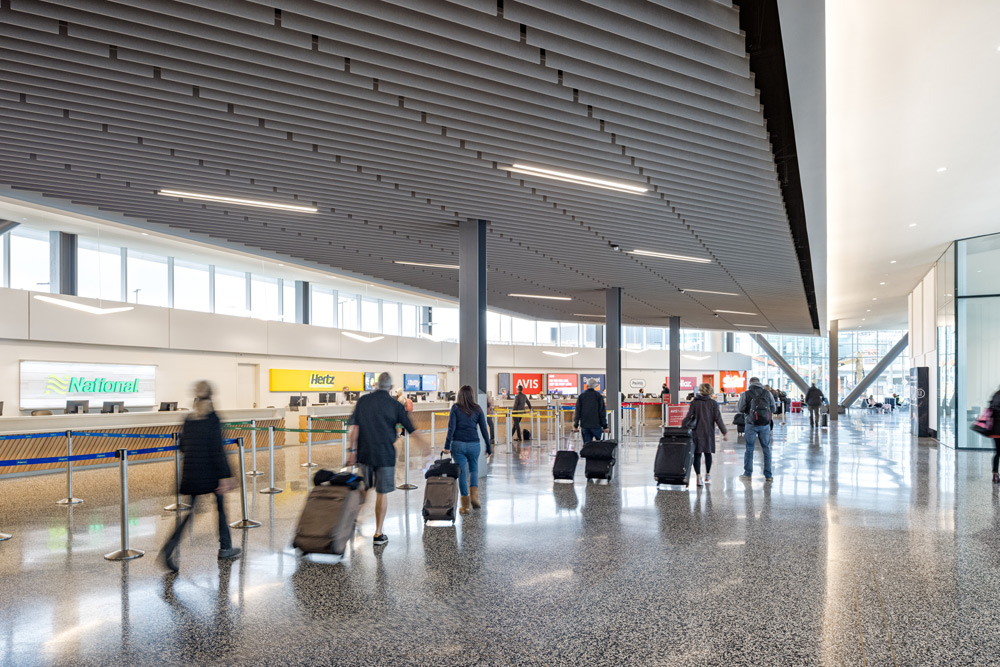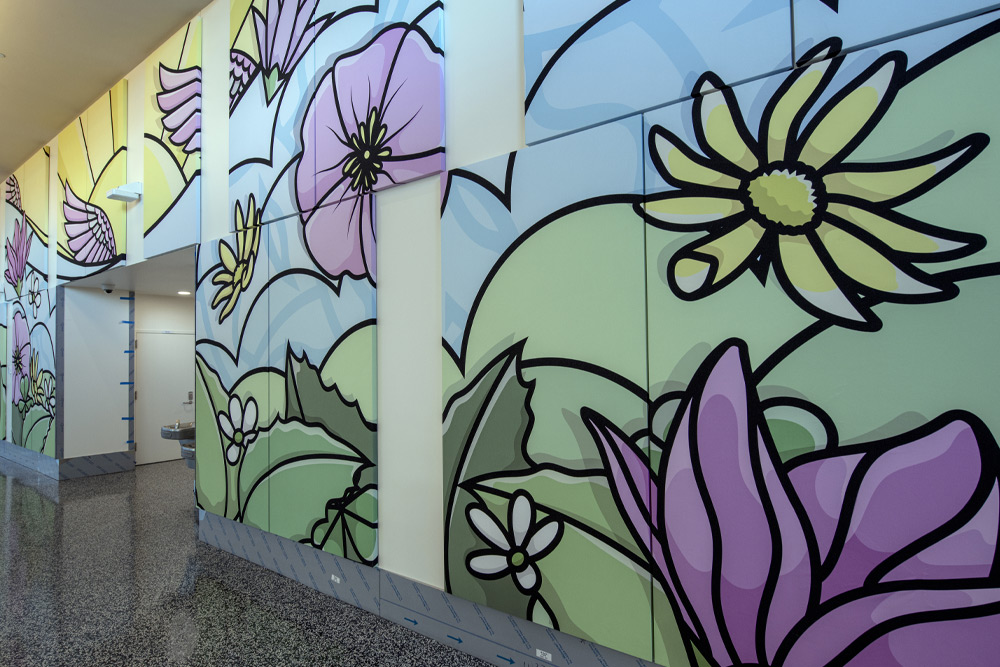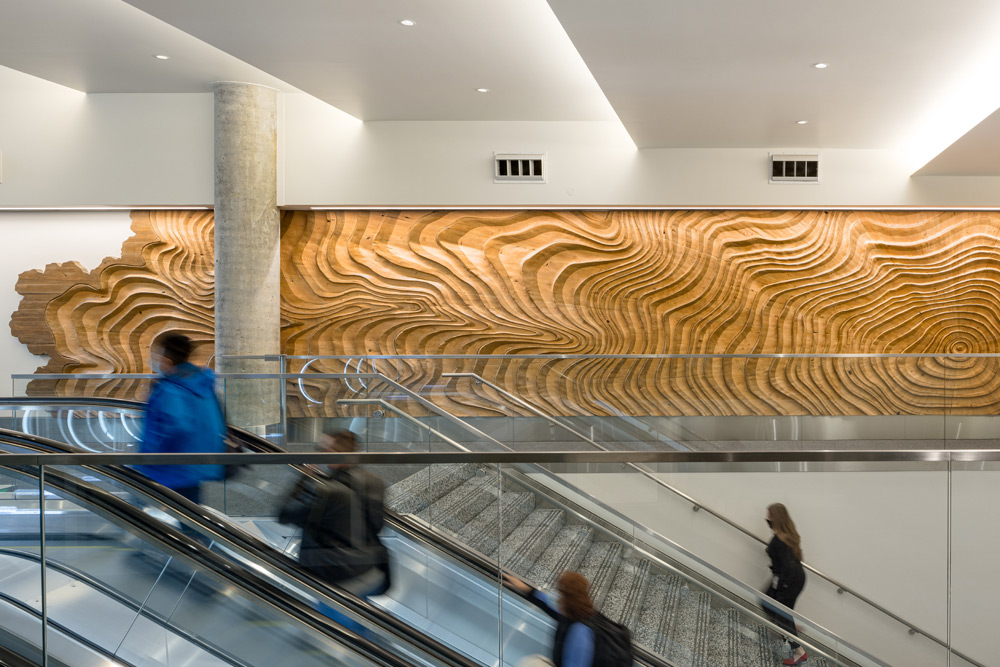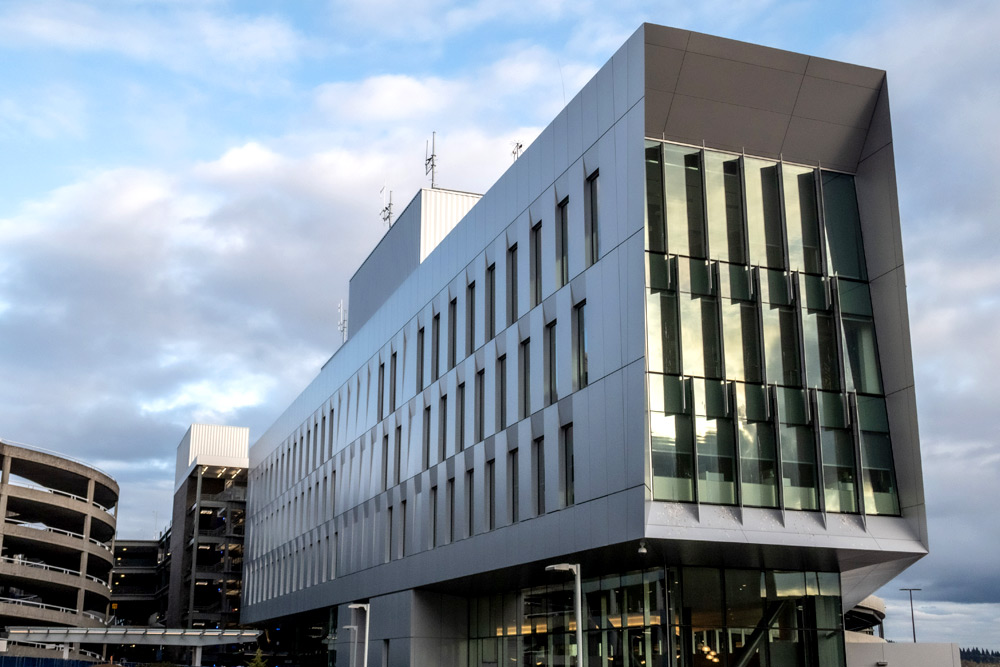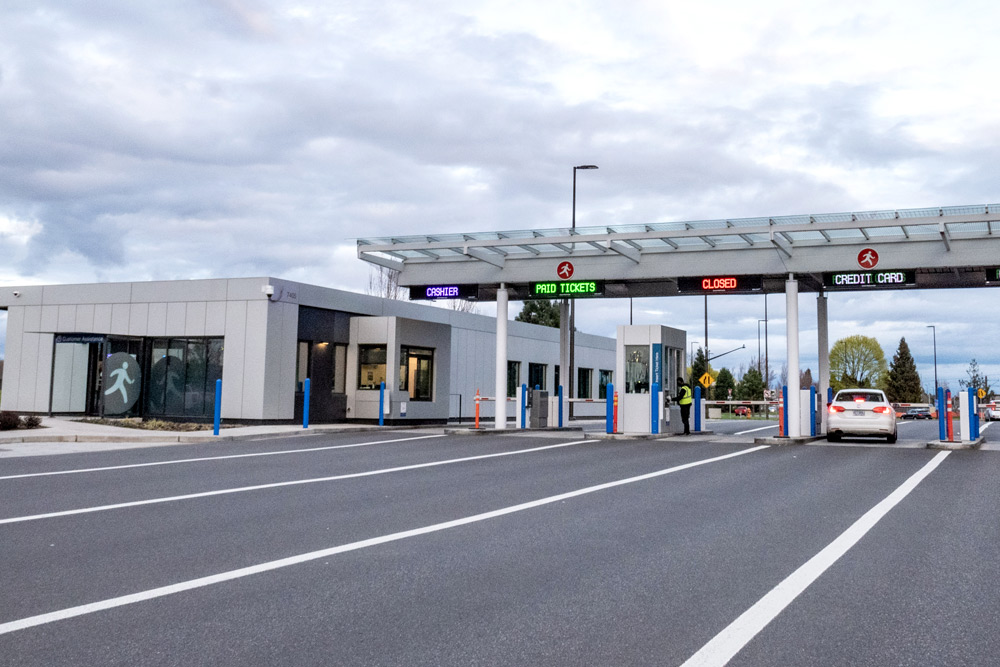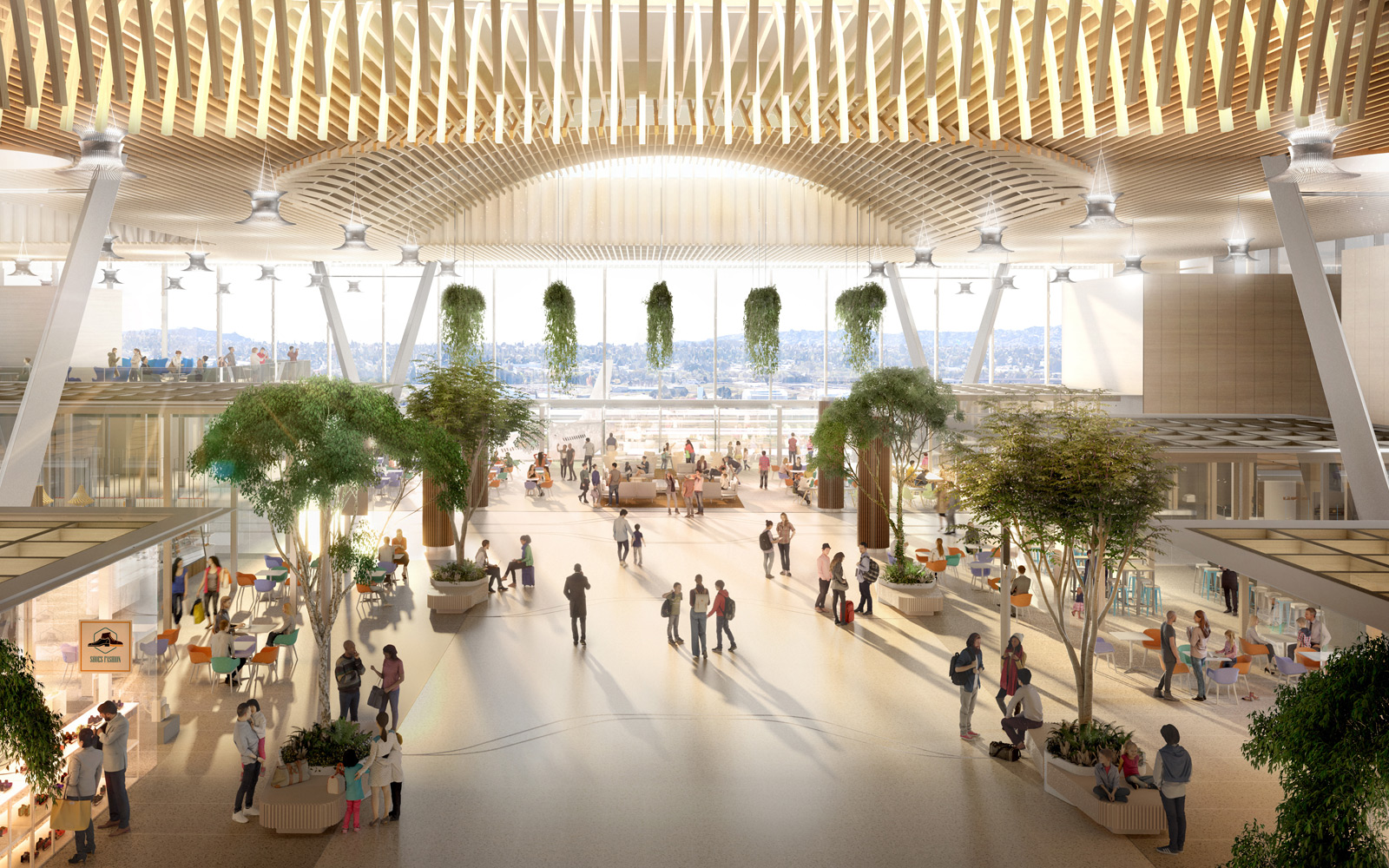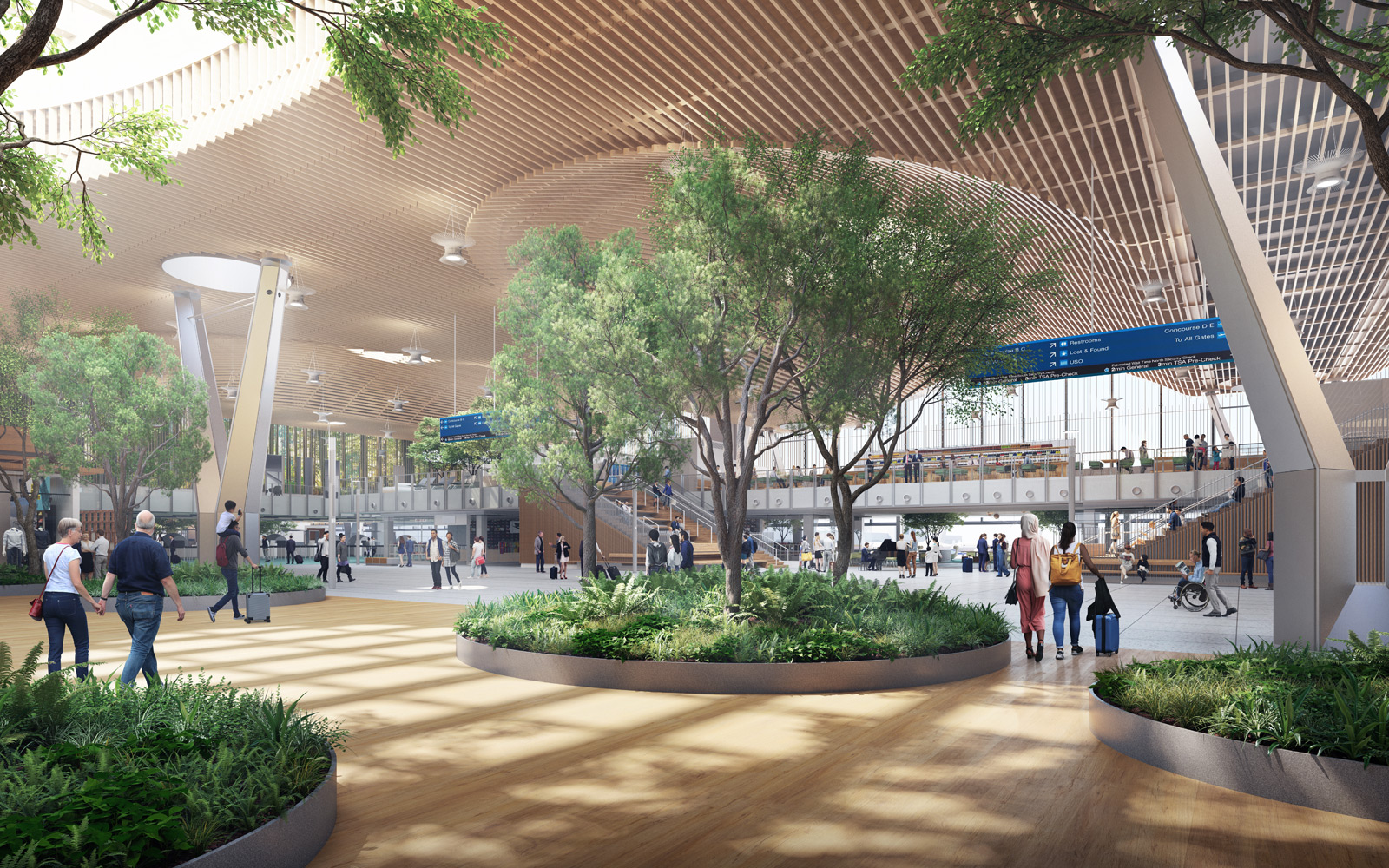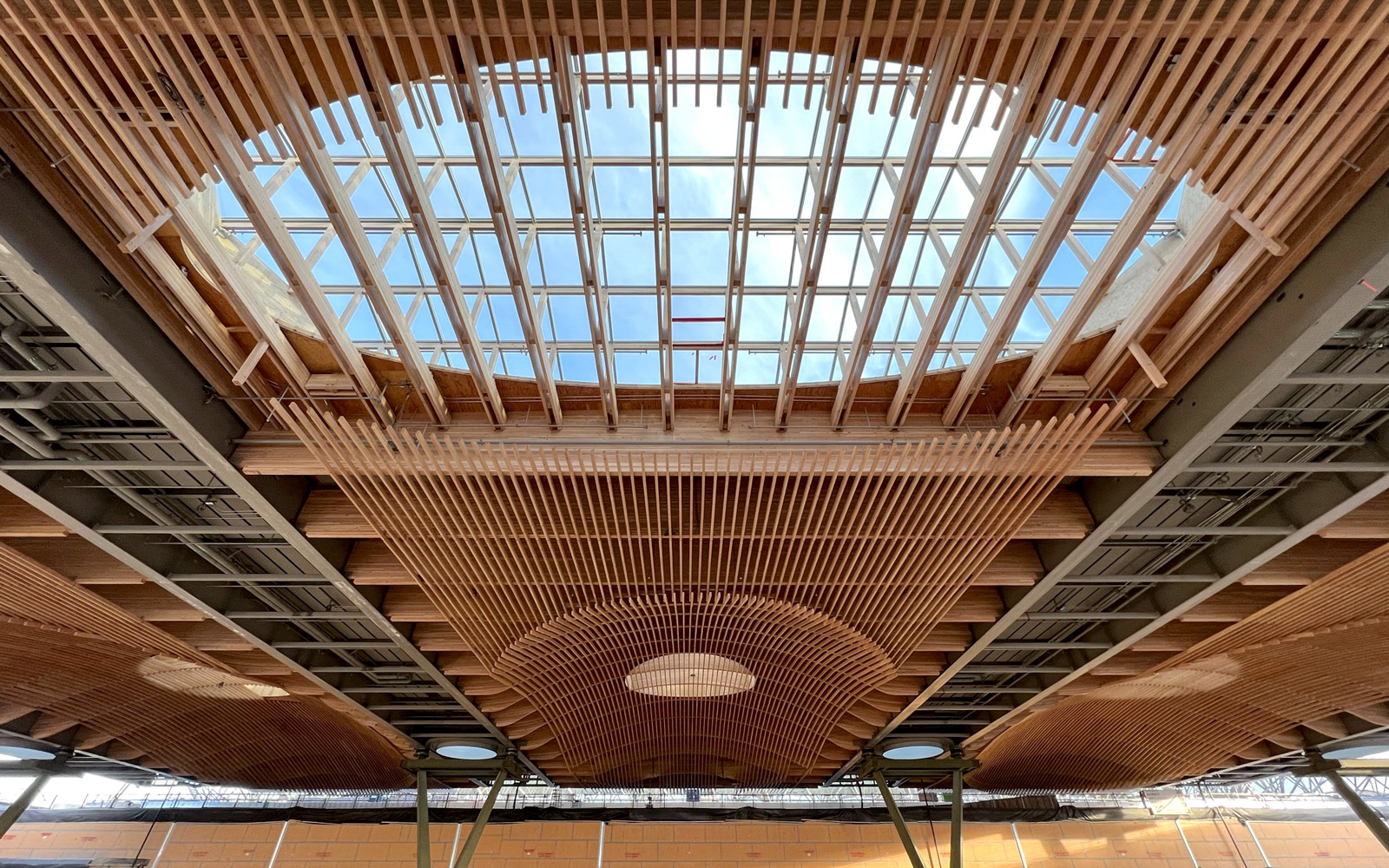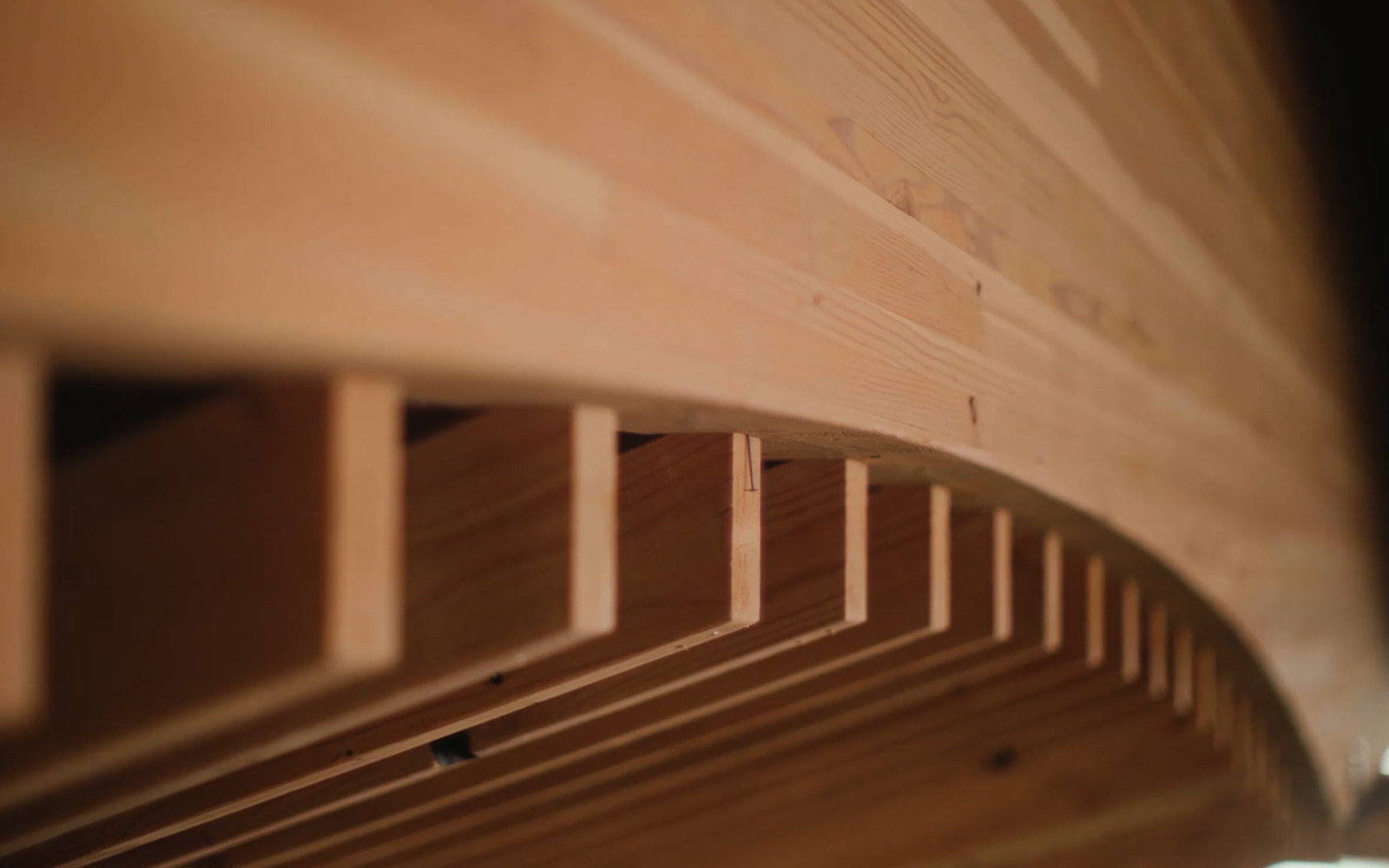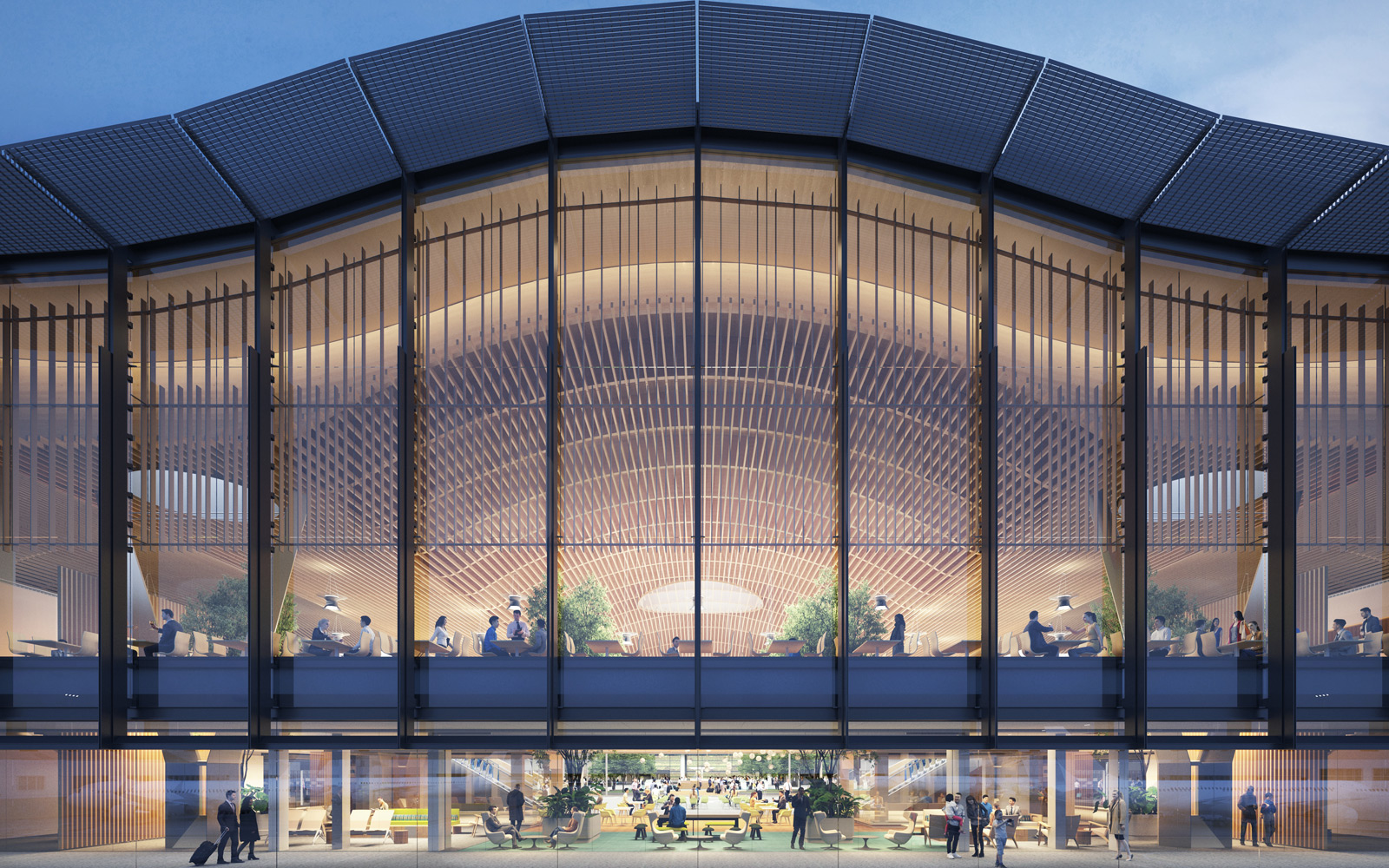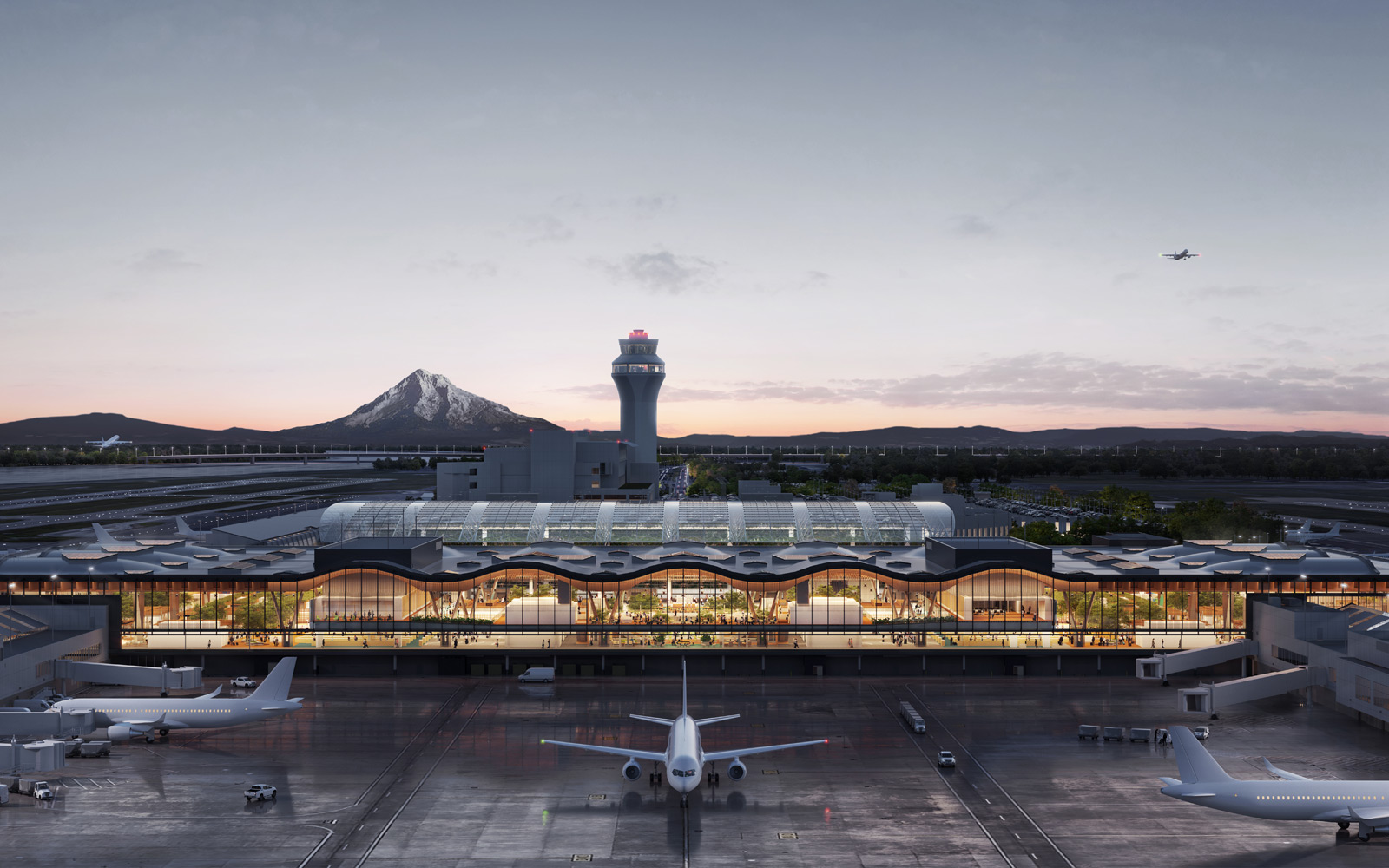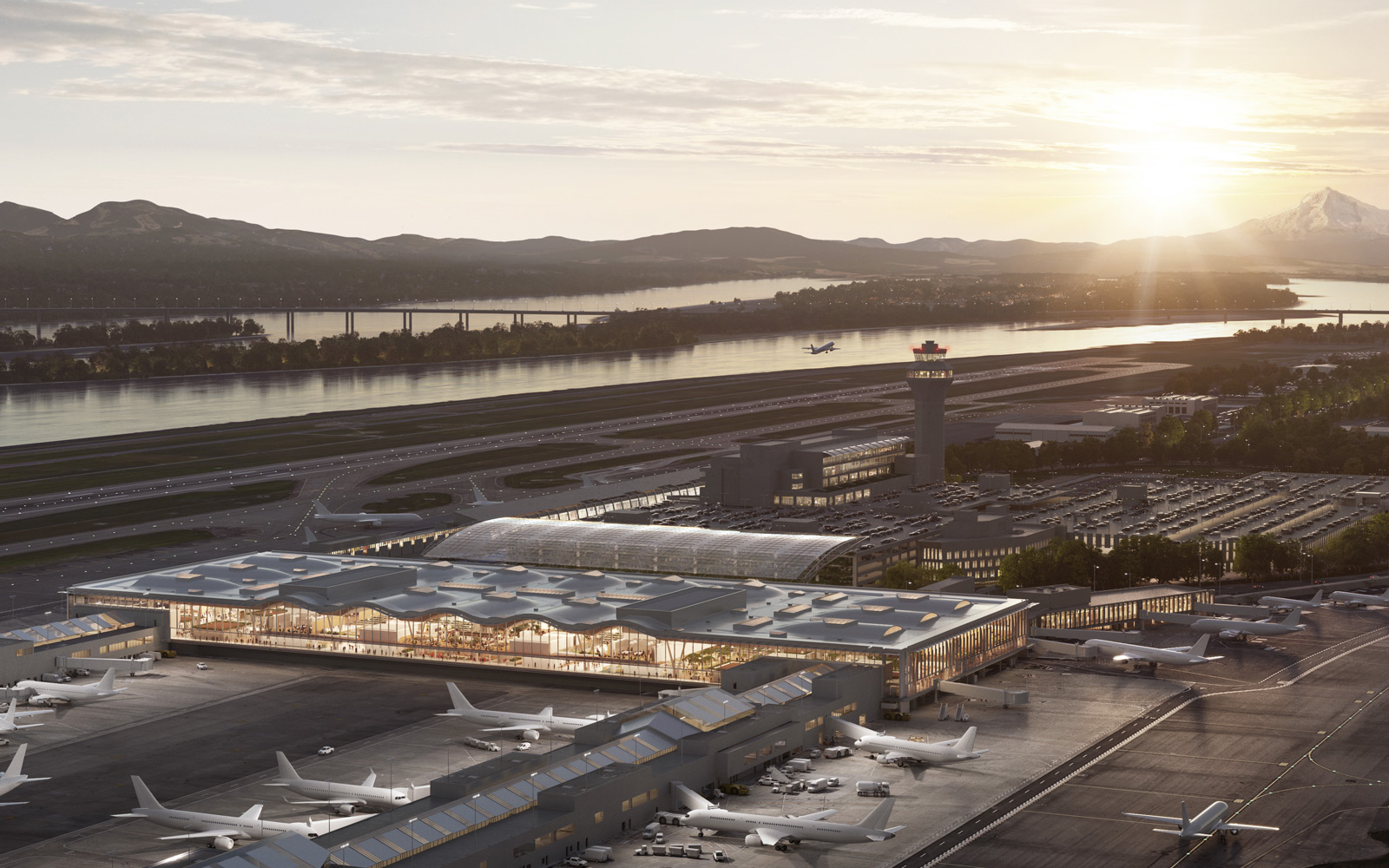Hike up to the lookout point at Council Crest Park or Powell Butte, and you’ll spot a map pointing out all the mountain peaks on display.
When you stand up on the mezzanine in PDX’s main terminal, looking out at the Doug fir ceiling and the wood floors, you’ll now see a similar visual guide: a map displaying the 16 nonprofit, community, tribal-owned, and family-run forests that supplied wood for the roof, concession stands, and flooring.
Down on the ground level, you’ll find trail markers as well! This winter, we’ve placed 14 round wooden markers around the terminal. Each one shows you which forest a specific patch of wood comes from.
Portland artist Carson Ellis (illustrator of Du Iz Tak? and Colin Meloy’s Wildwood Chronicles) designed both map and markers.
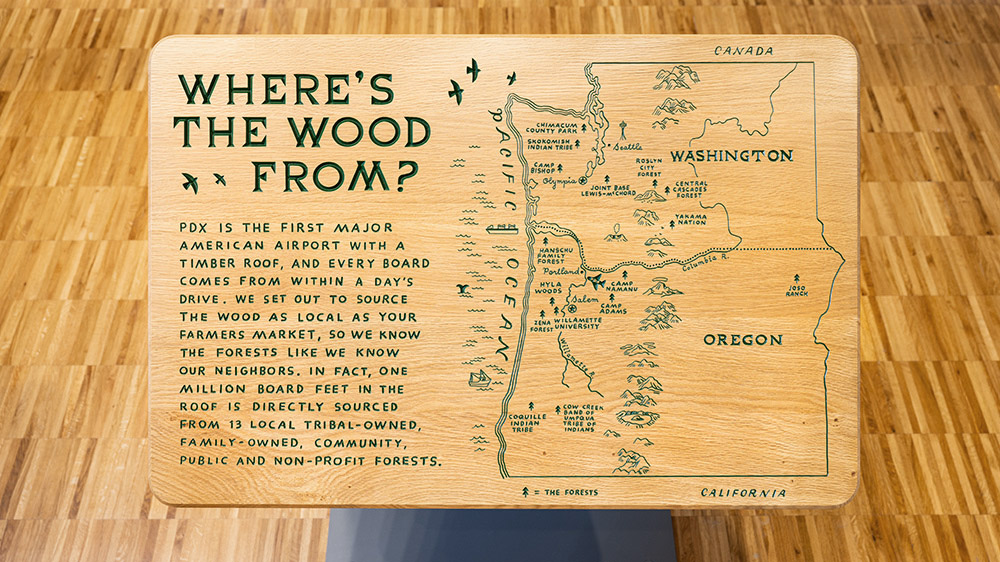
Find a forest near you on the map
On the map, you’ll spy forests all over Washington and Oregon. Whether the lumber came from the Olympic Peninsula, the Wallowa Mountains, or the Willamette Valley, it traveled less than 300 miles to get to PDX.
Each of the forests has its own story to tell. For example, three generations of the Jaussaud-Winn family have owned JOSO Ranch, in Eastern Oregon, since 1956. And three generations of the Zacharias family have managed the ranch’s 4,400 forested acres since 1972. To supply PDX with Doug fir for the terminal shops, the Winns and Zachariases selectively harvested trees from JOSO’s forests, says Bob Winn, the current owner. "We've tried to maintain the land the way it was 60 years ago and not disturb it," he says. "We plan on keeping it in the family.”
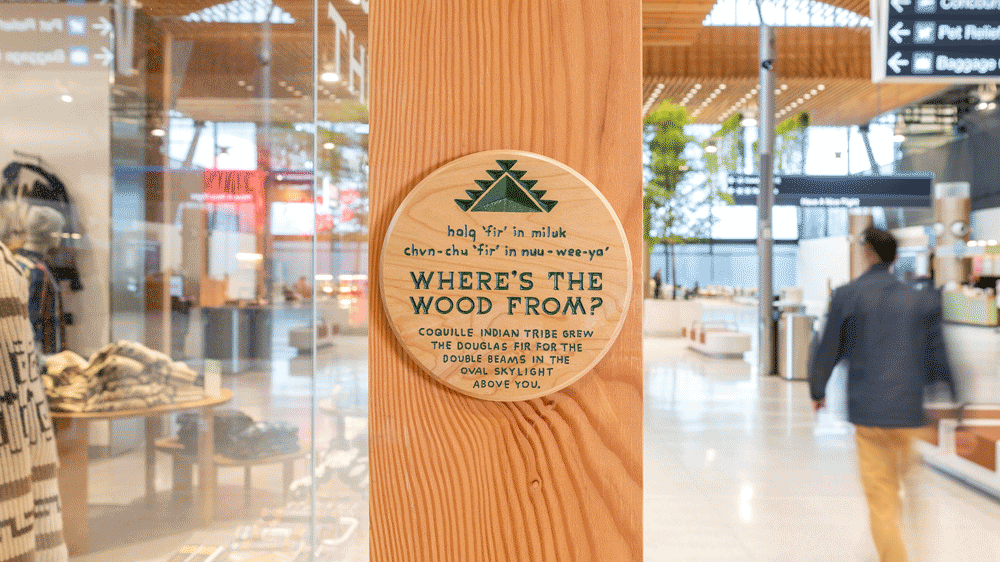
Spotlighting PDX’s tribal partners
On the map, you’ll also spot four Northwest tribes—the Yakama Nation, the Coquille Indian Tribe, the Skokomish Indian Tribe, and the Cow Creek Band of Umpqua Tribe of Indians—who partnered with PDX to supply wood from their forests for portions of the roof and shops.
We also asked each tribe to share meaningful imagery and phrases, which Ellis integrated into the design of the wood markers.
Wood markers and where to see them
As you wander through the main terminal, you’ll now spy wood markers on columns, walls, and stairs.
For example, if you spot a marker near either security checkpoint, look up: The Doug fir beams in the oval skylights above you came from the Coquille Indian Tribe in southwest Oregon. For their markers, the tribe chose an iconic design that Coquille people have woven into baskets and caps for untold generations. They added the word for “fir” in Miluk and Nuu-wee-ya’, sleeping languages that the Coquille are reviving for future generations.
“To be able to go to Portland, and have my kids see the impact of our ancestral homelands in that space, and to connect with them, it just means a lot,” says Bridgett Wheeler, executive director of programs and services for the Coquille Indian Tribe. “It also means a lot to be recognized as a partner in these kinds of projects in the same way that private industries have been for a long time.”
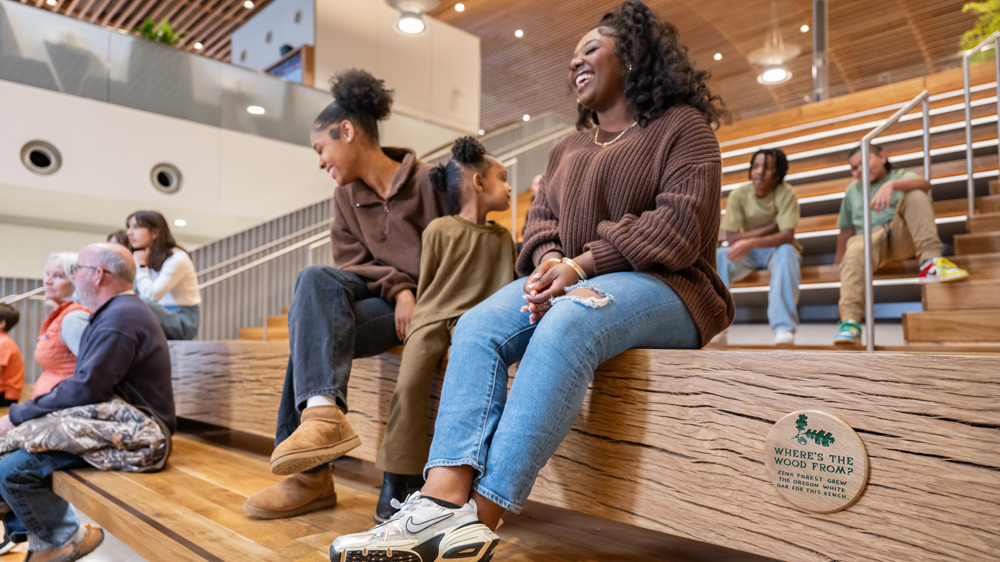
A few of the other forests the markers honor:
- The “glulam” (glue-laminated) beams in all the local shops, as well as the beam above the round skylights, contains Douglas fir harvested from the Yakama Reservation in central Washington.
- The Douglas fir lattice walls near the trees at the heart of the terminal came from forests belonging to the Cow Creek Band of Umpqua Tribe of Indians in south-central Oregon.
- The hardwood flooring and the stadium seats came from Salem’s Zena Forest Products, who used white oak harvested from nearby forests, including their family-owned Zena Forest.
- The 35,000 pieces of Douglas fir in the ceiling lattice include 3-by-6-foot timbers from the Skokomish Tribe in Washington.
